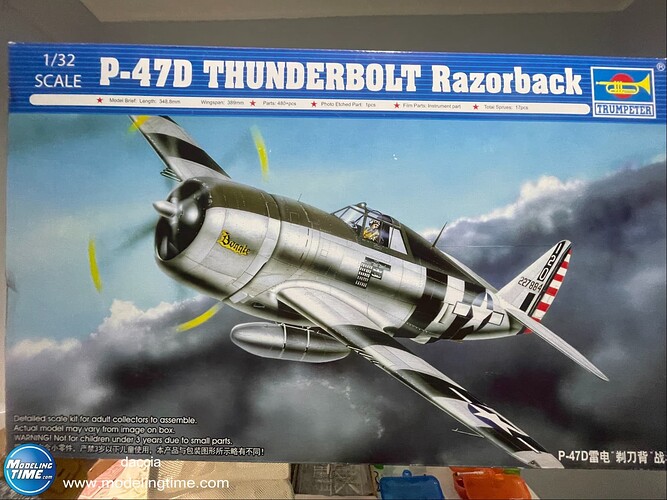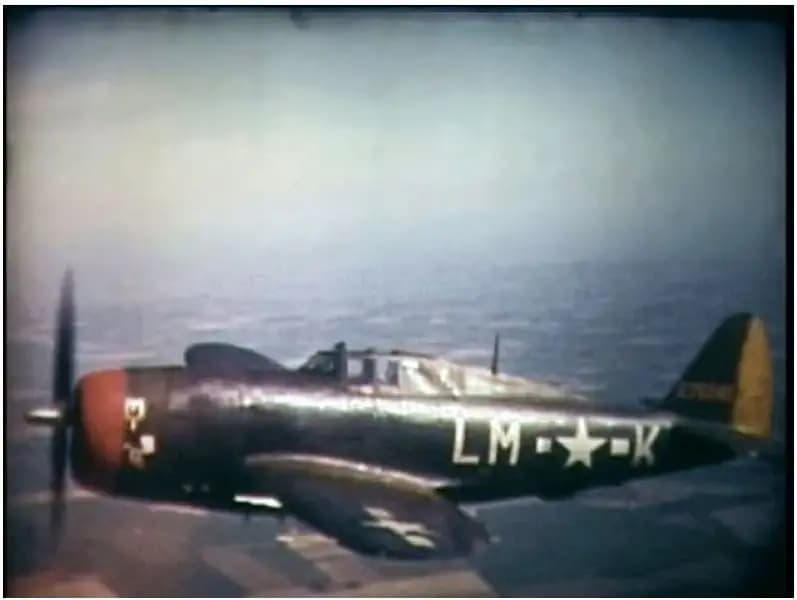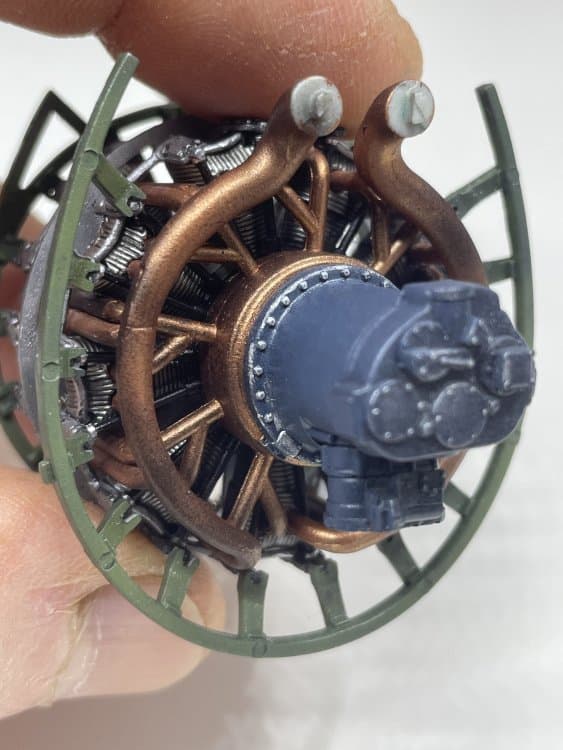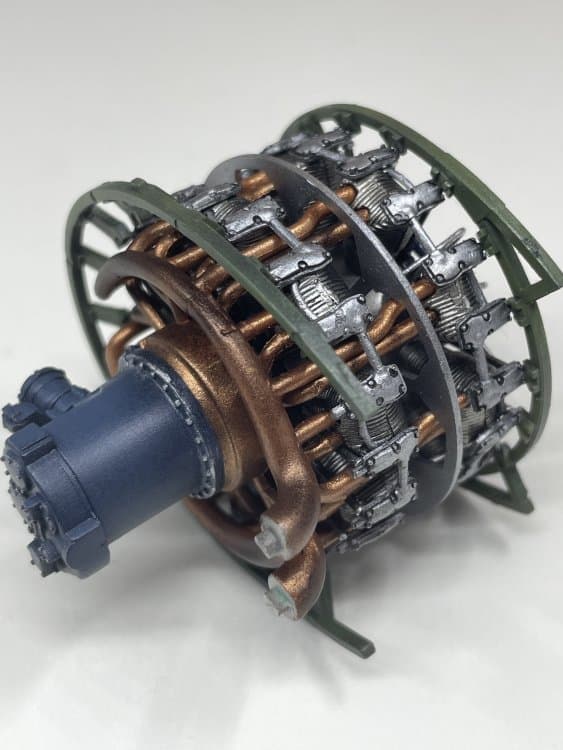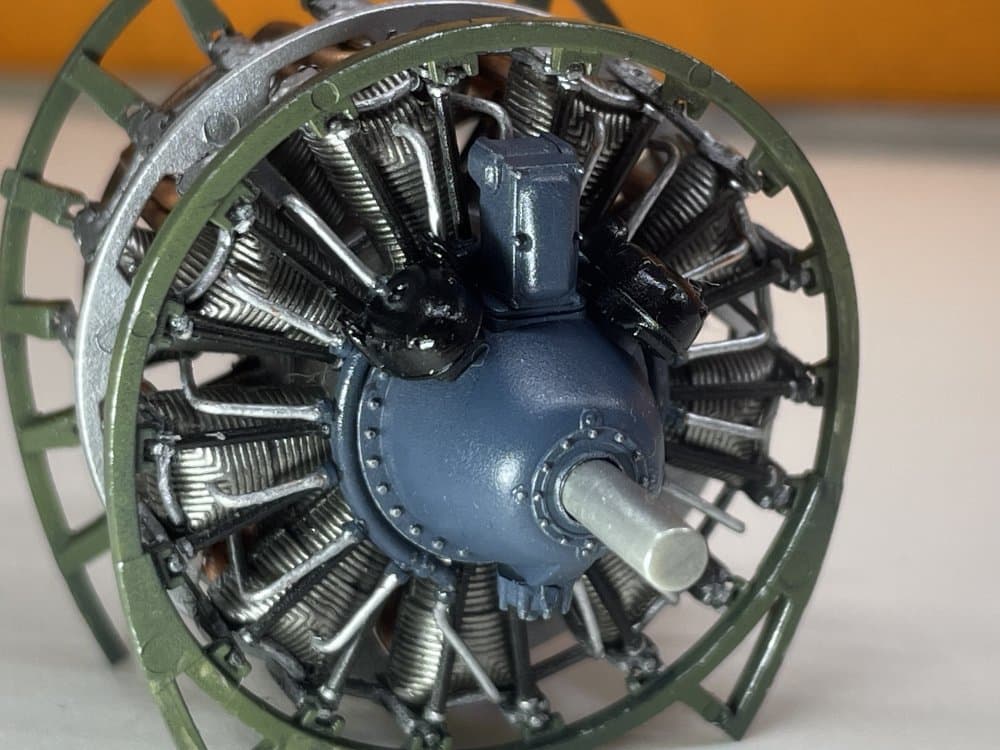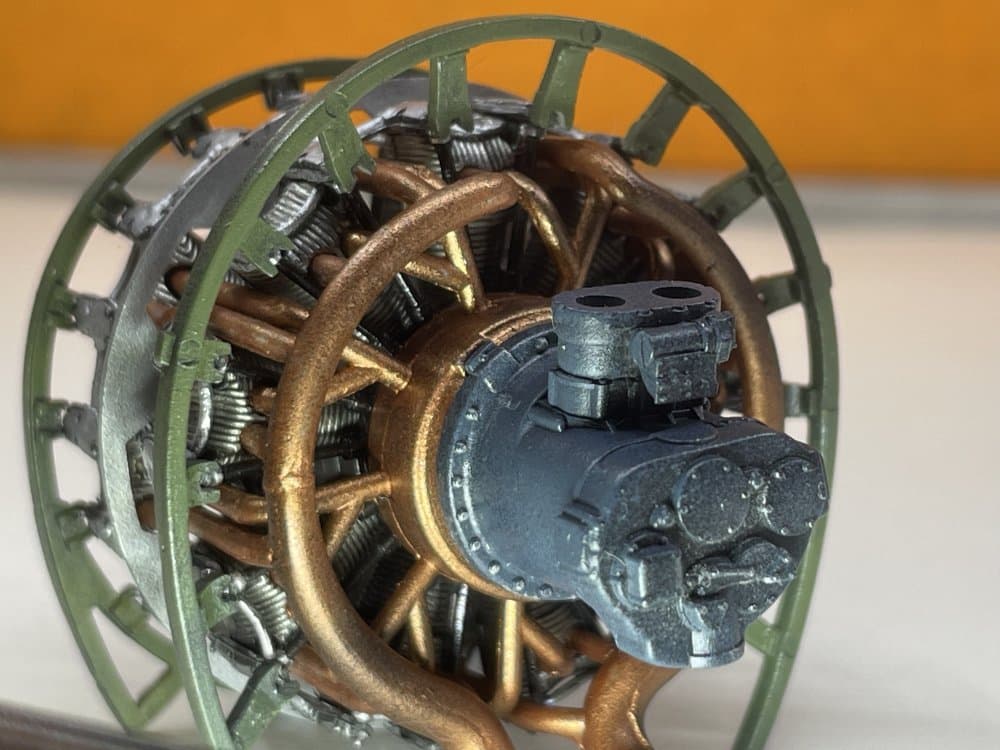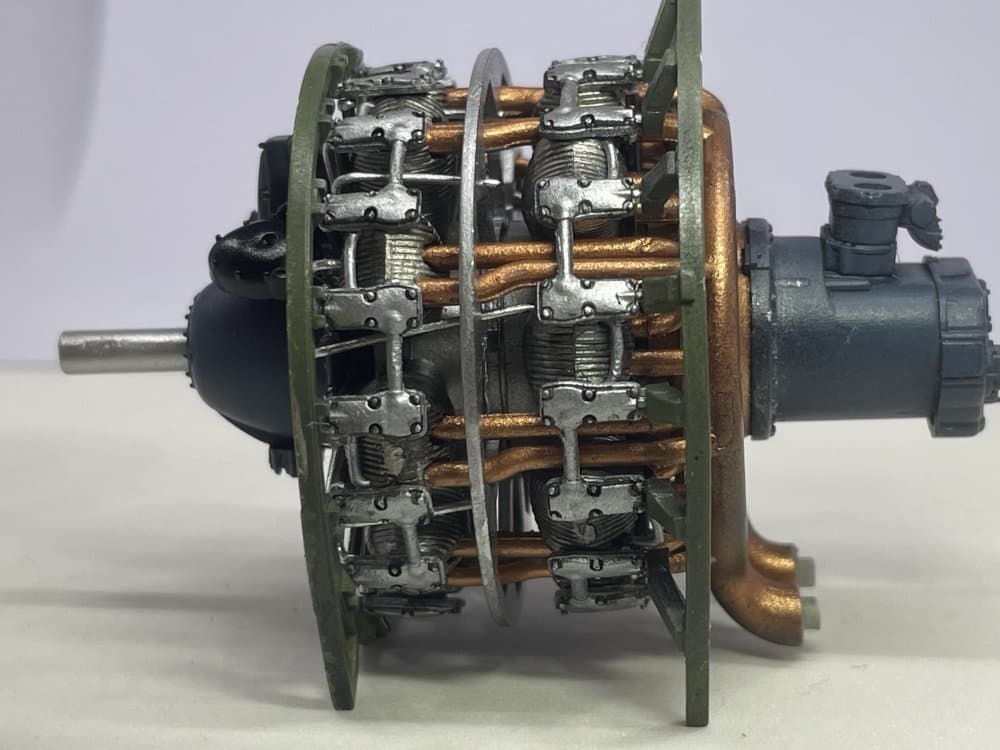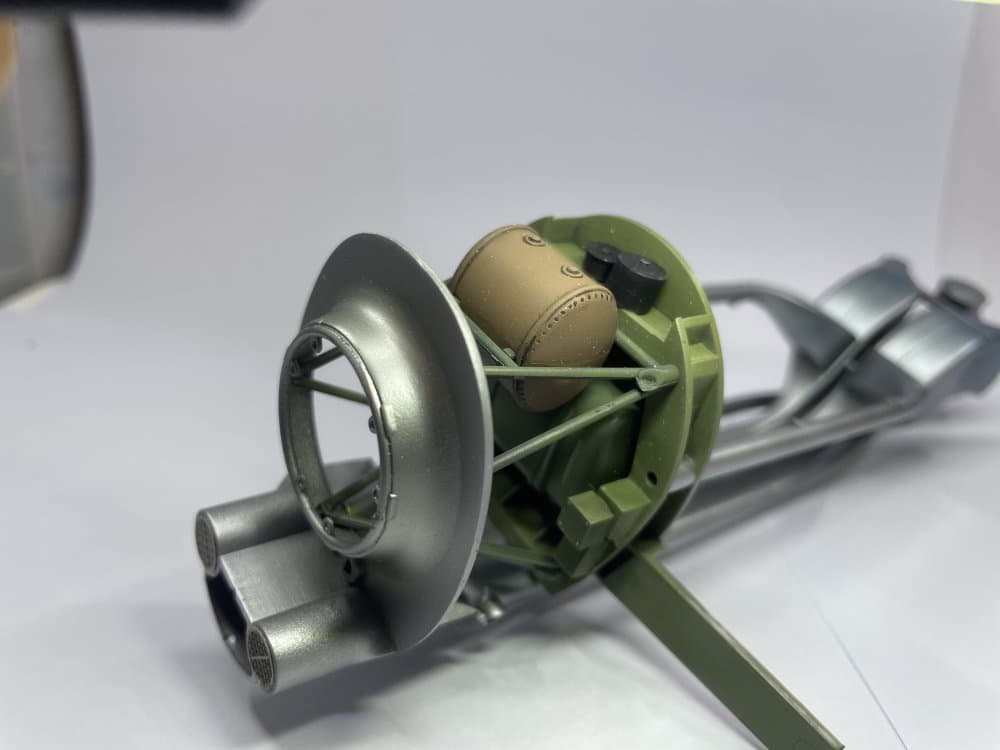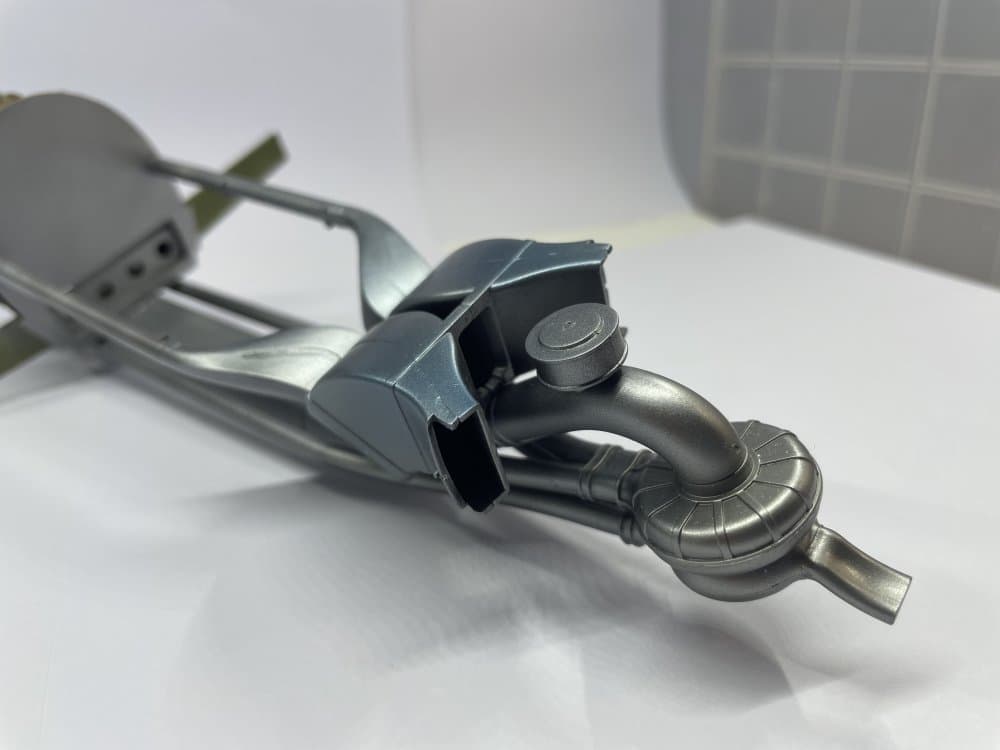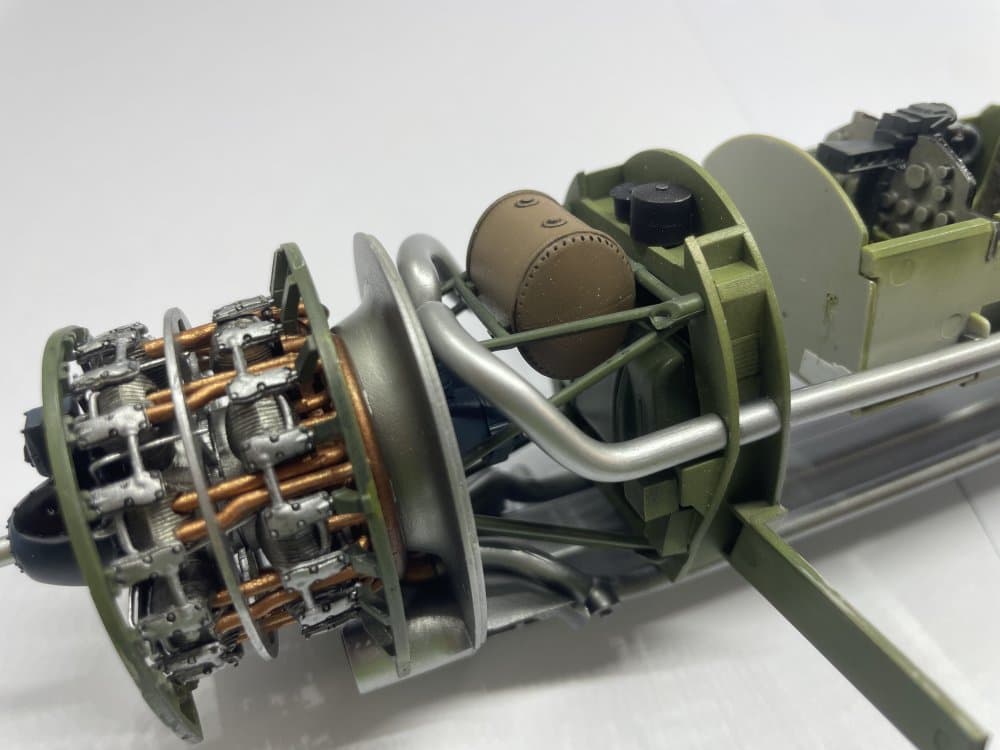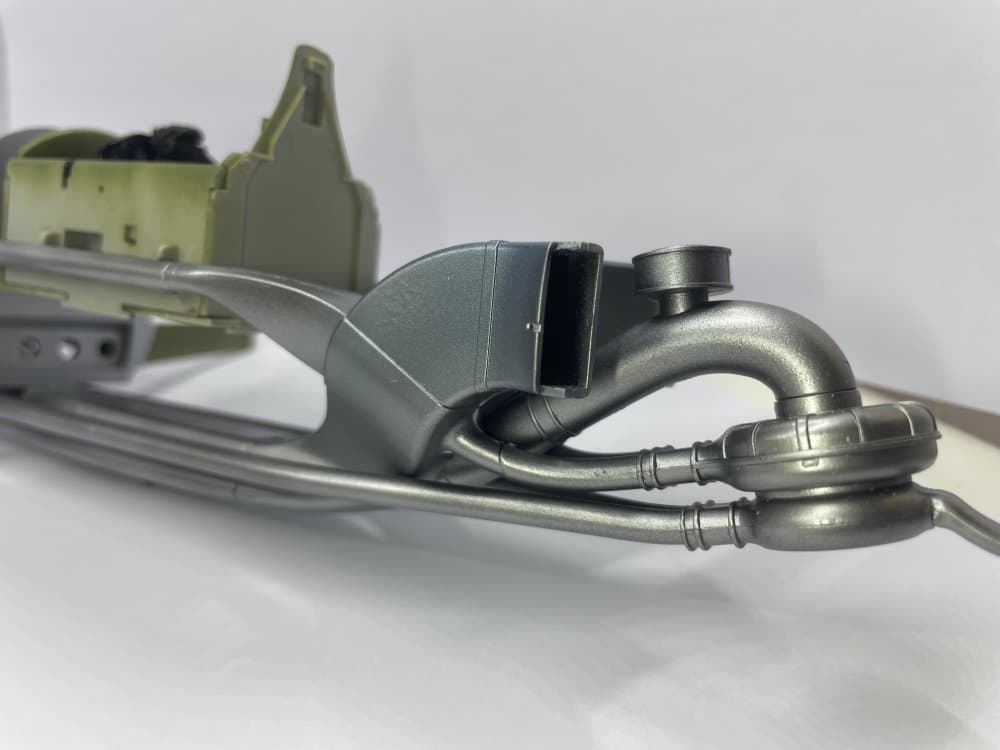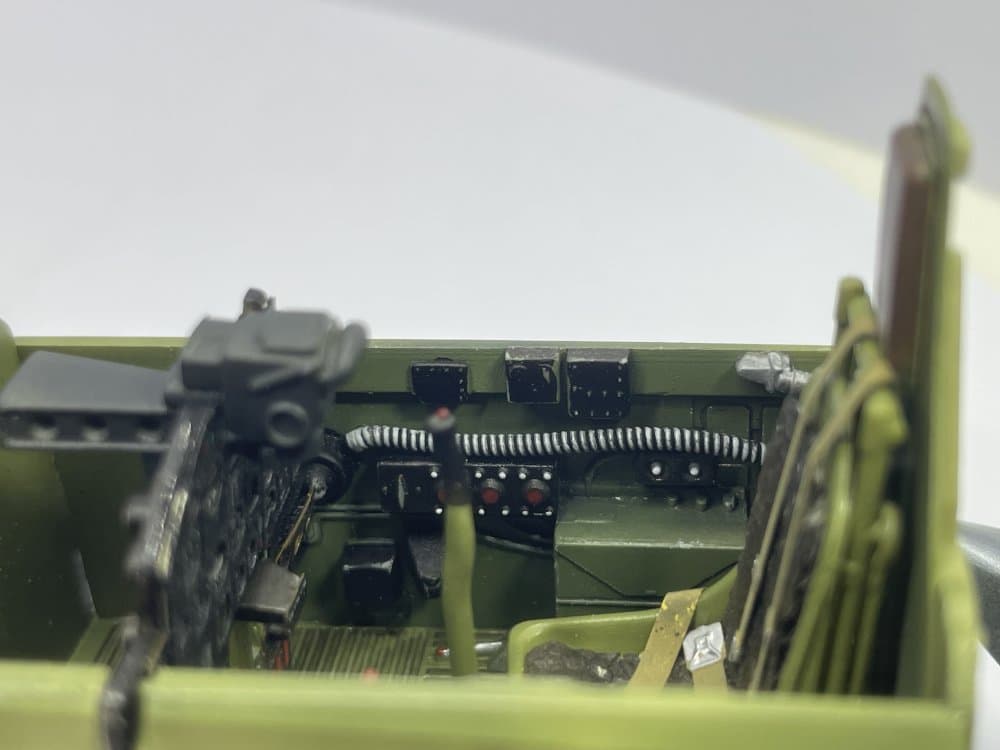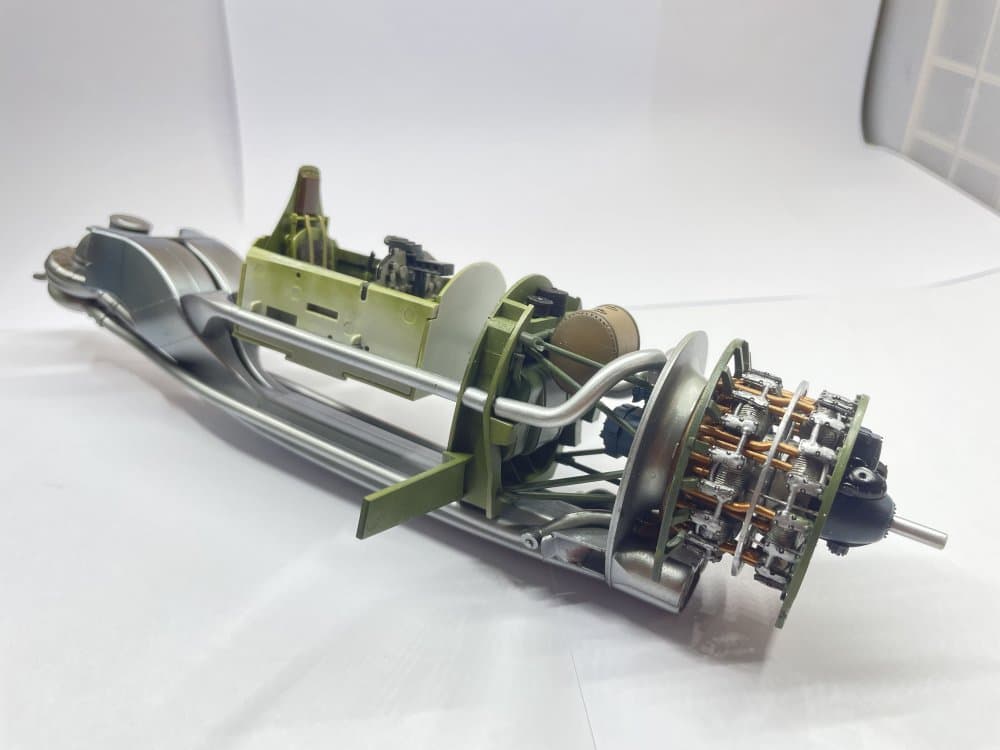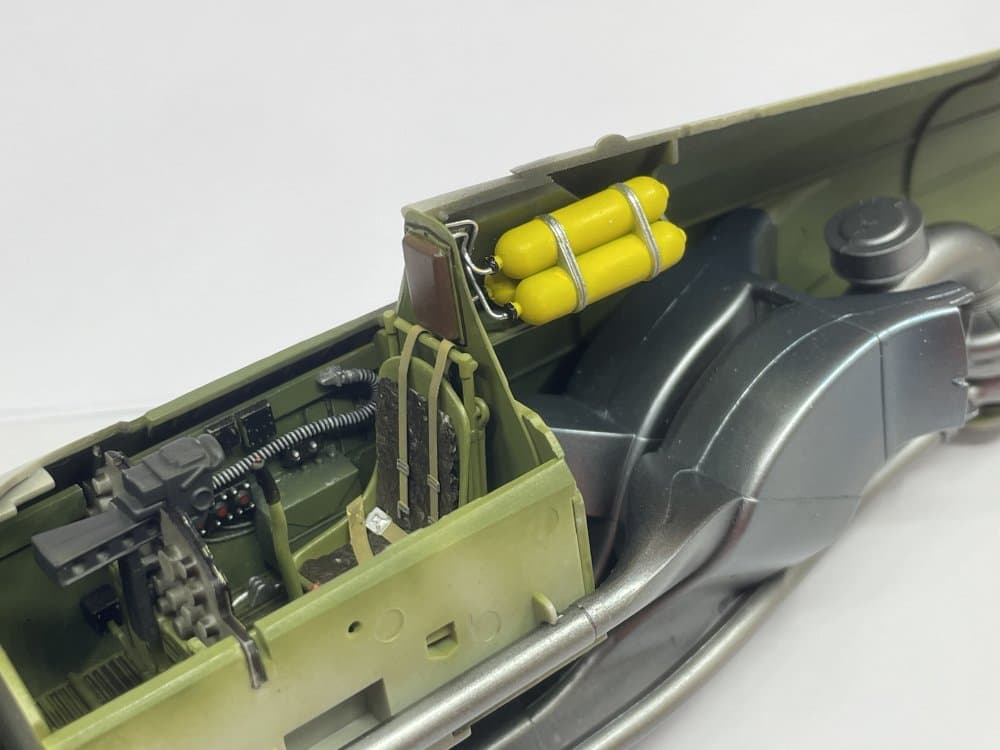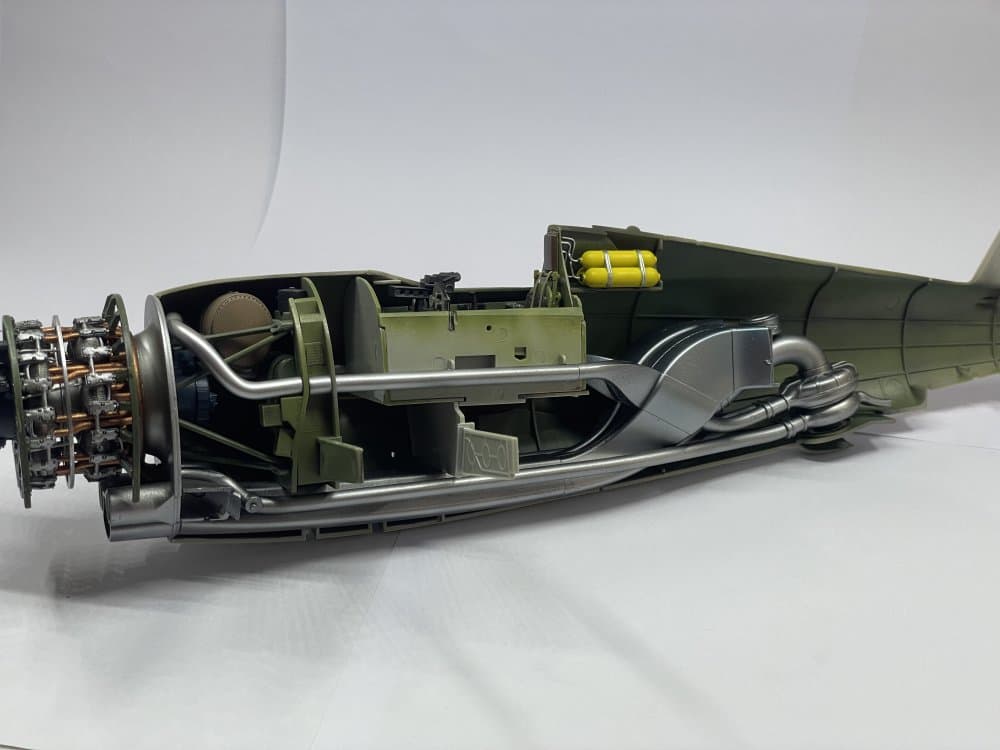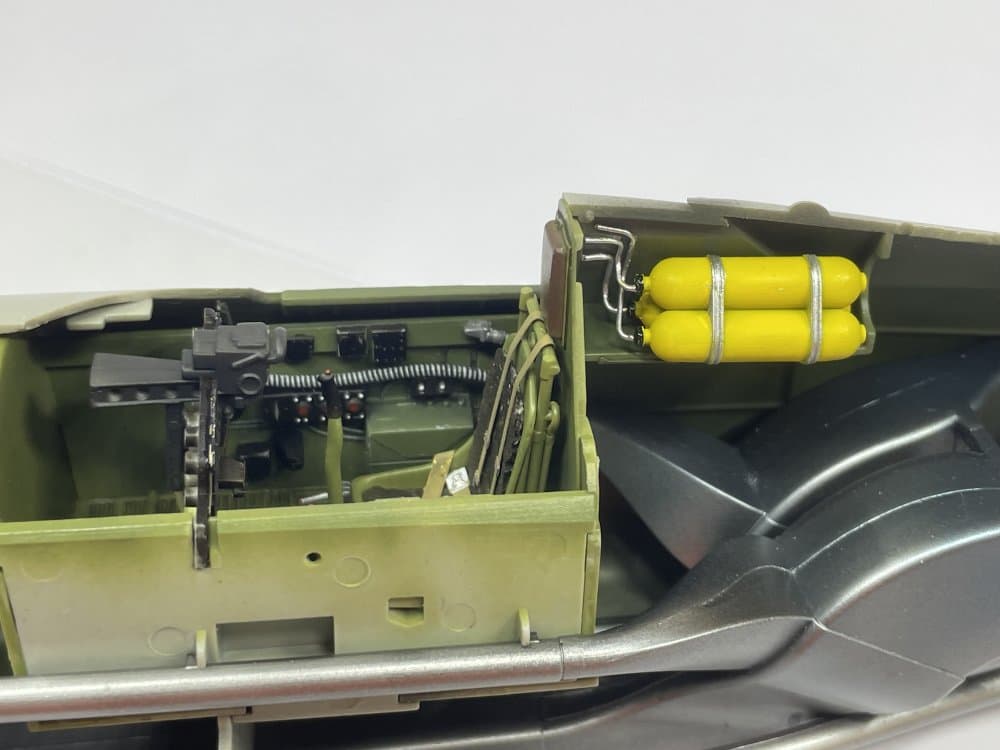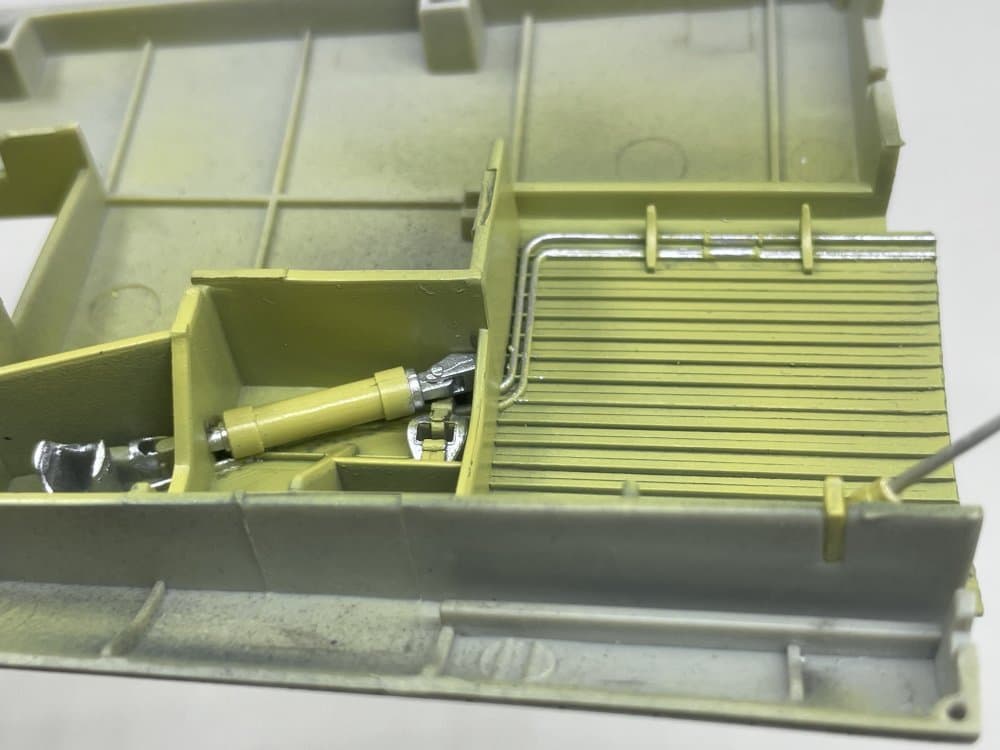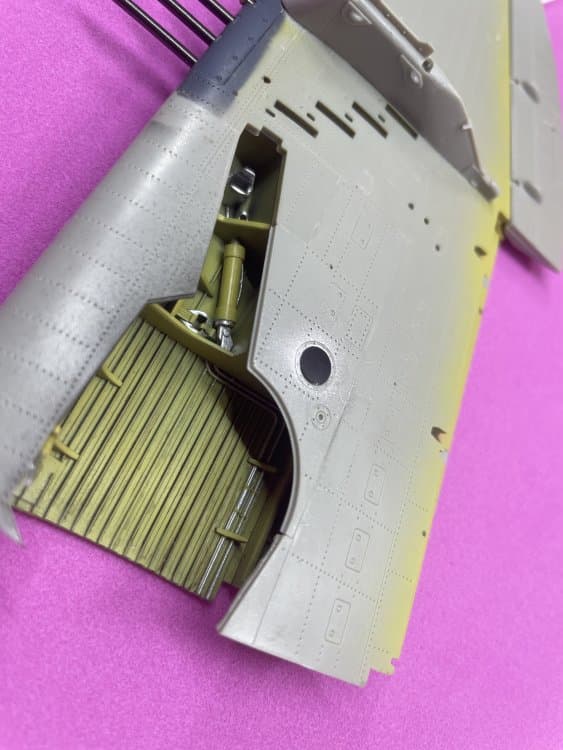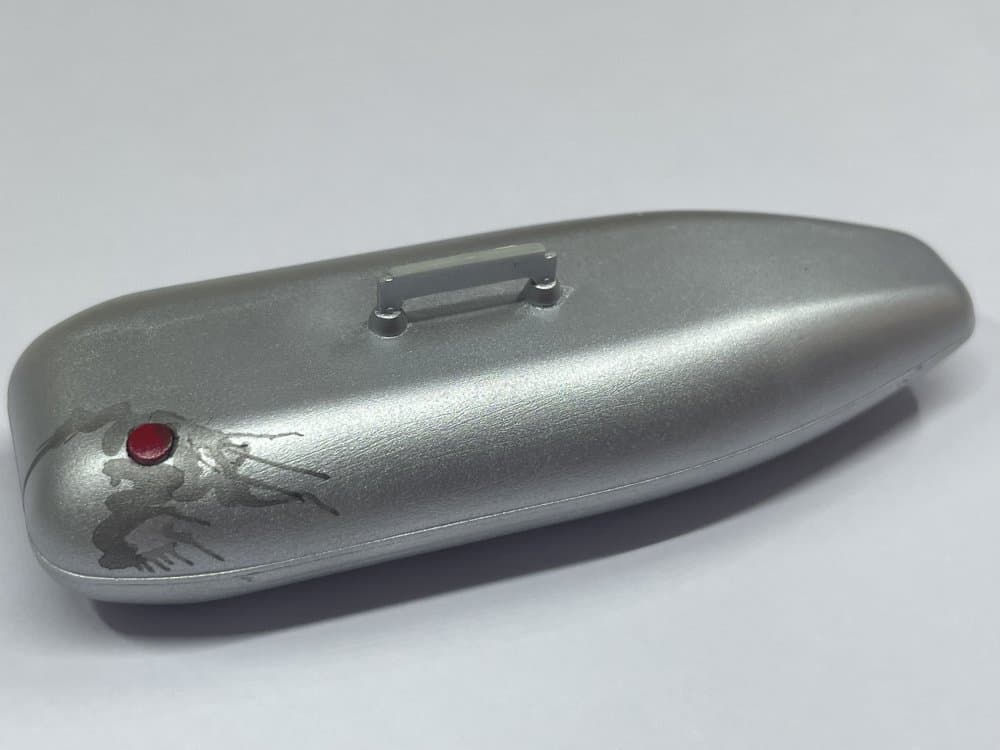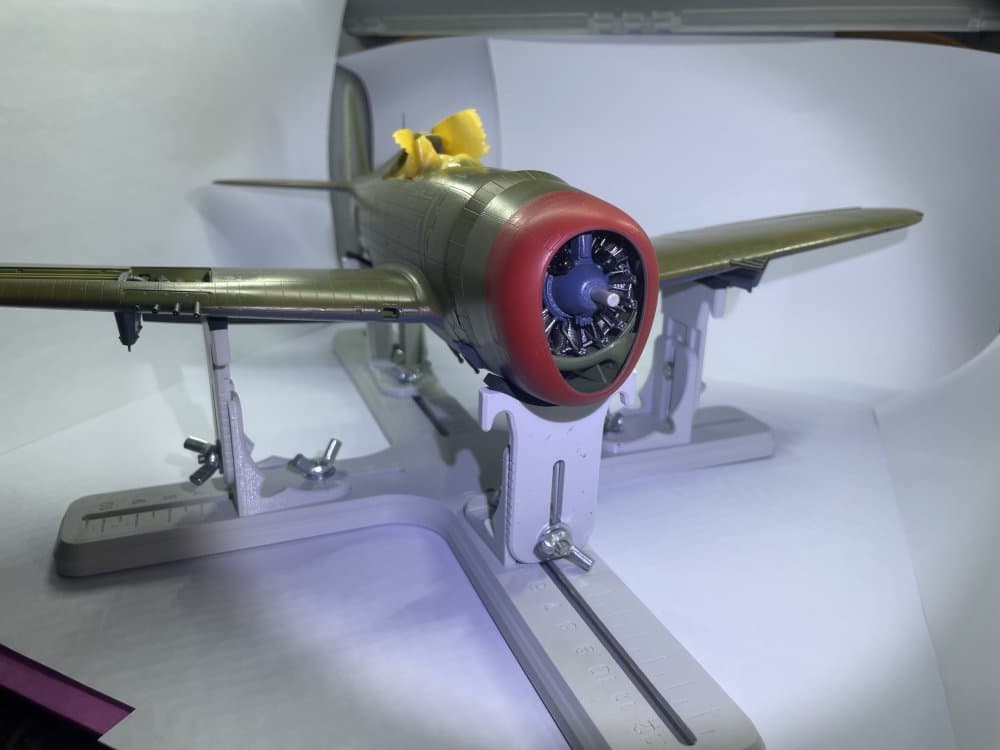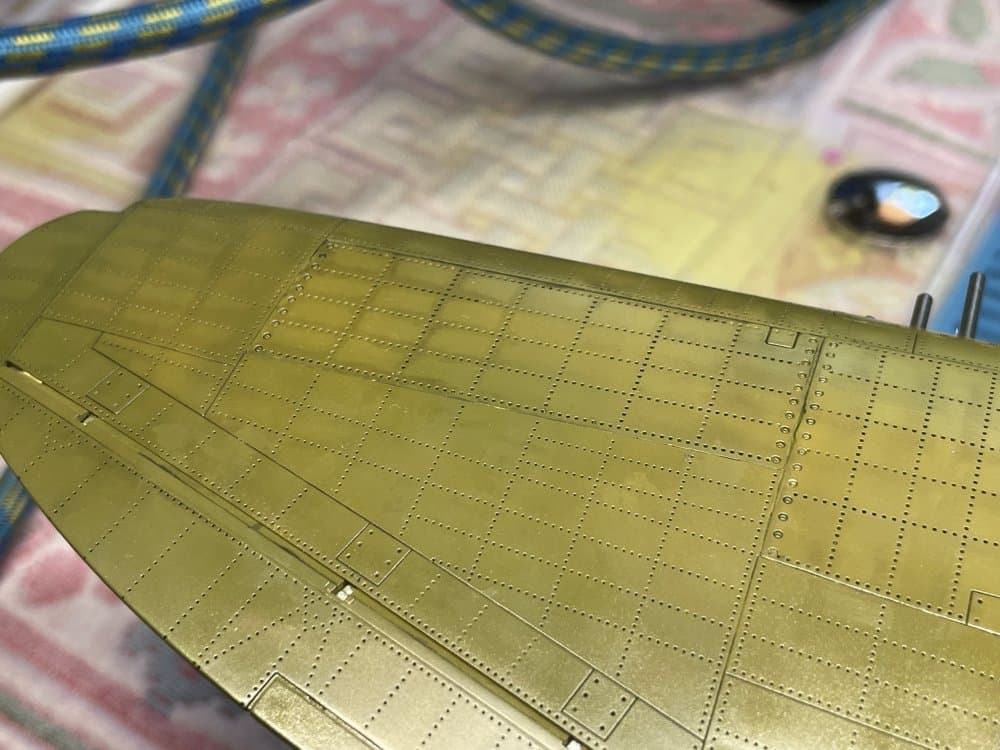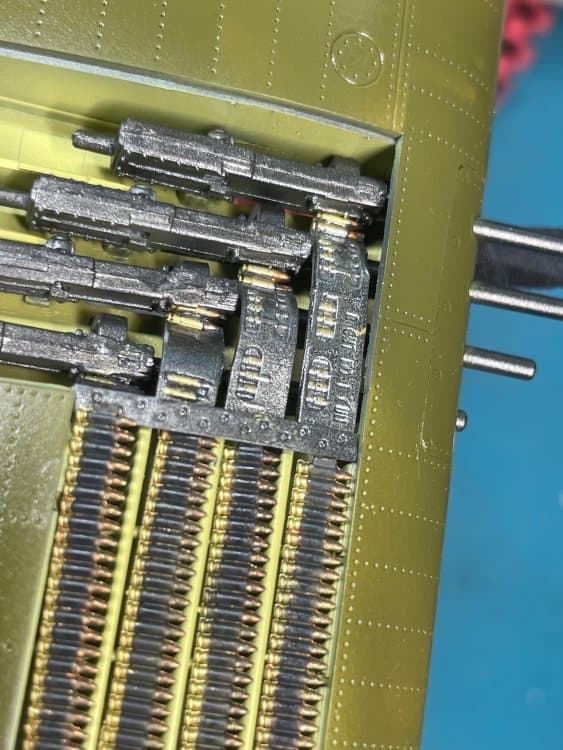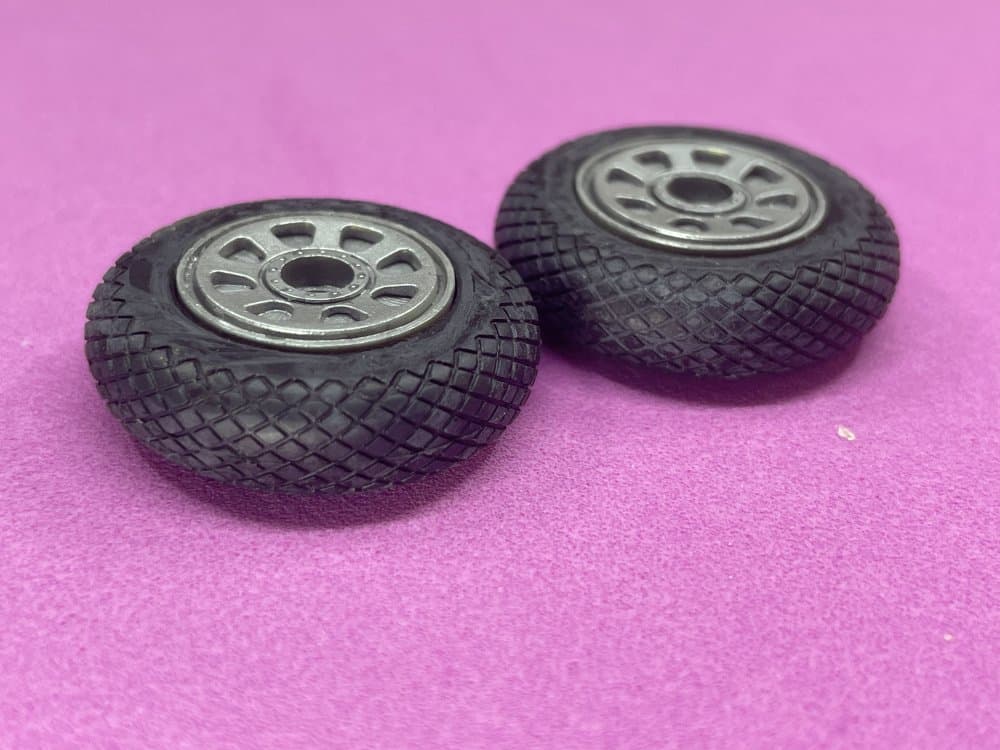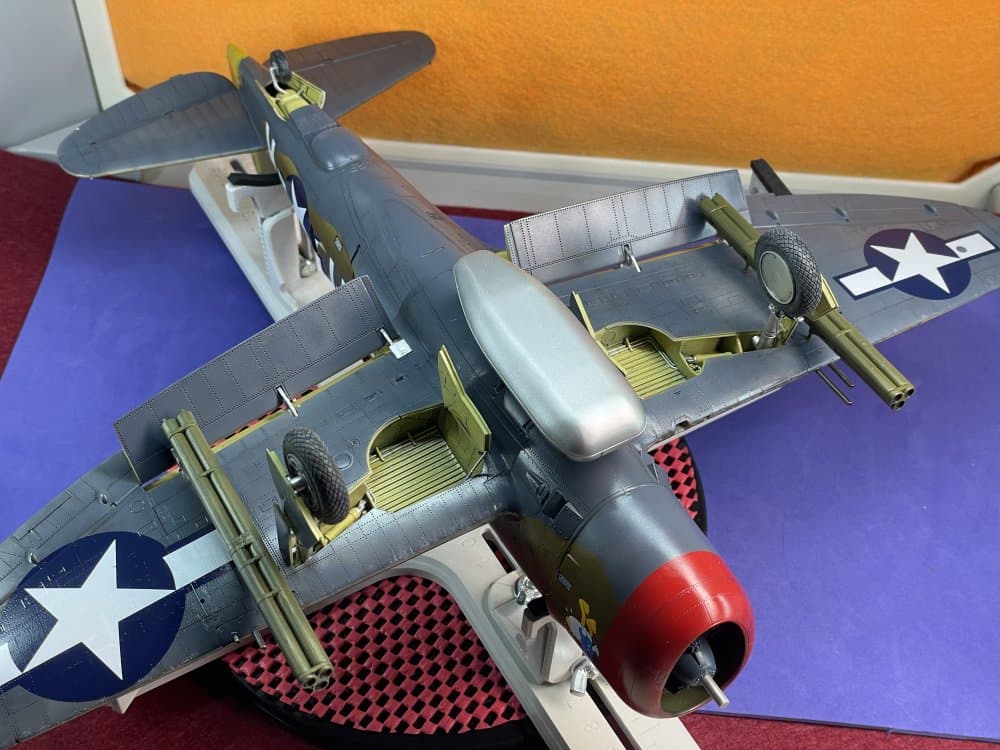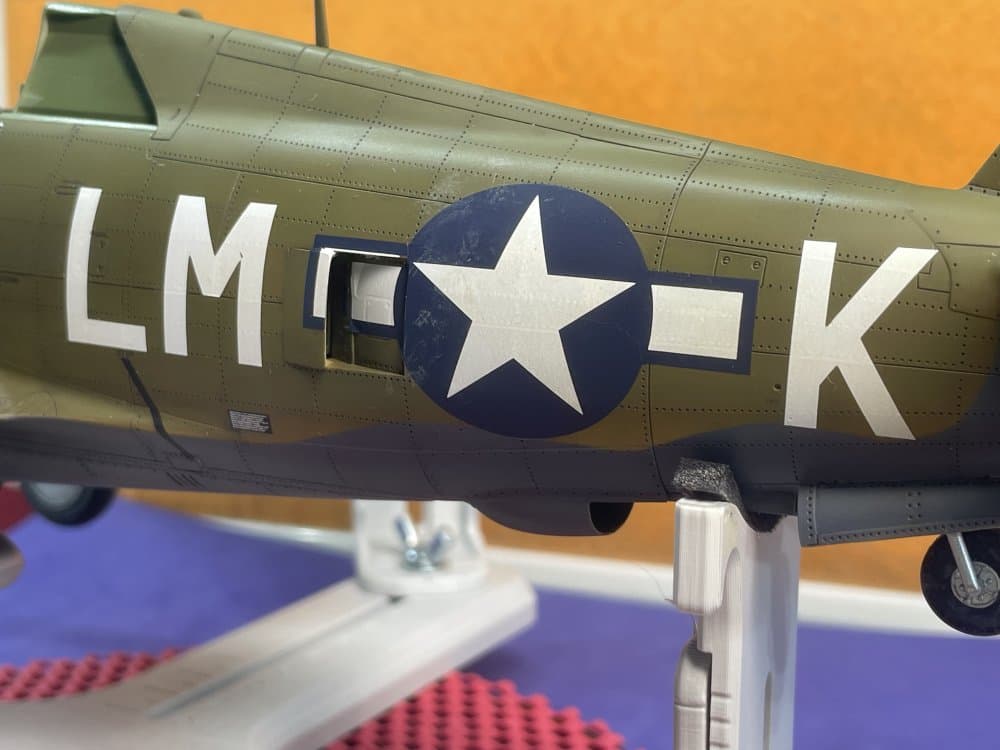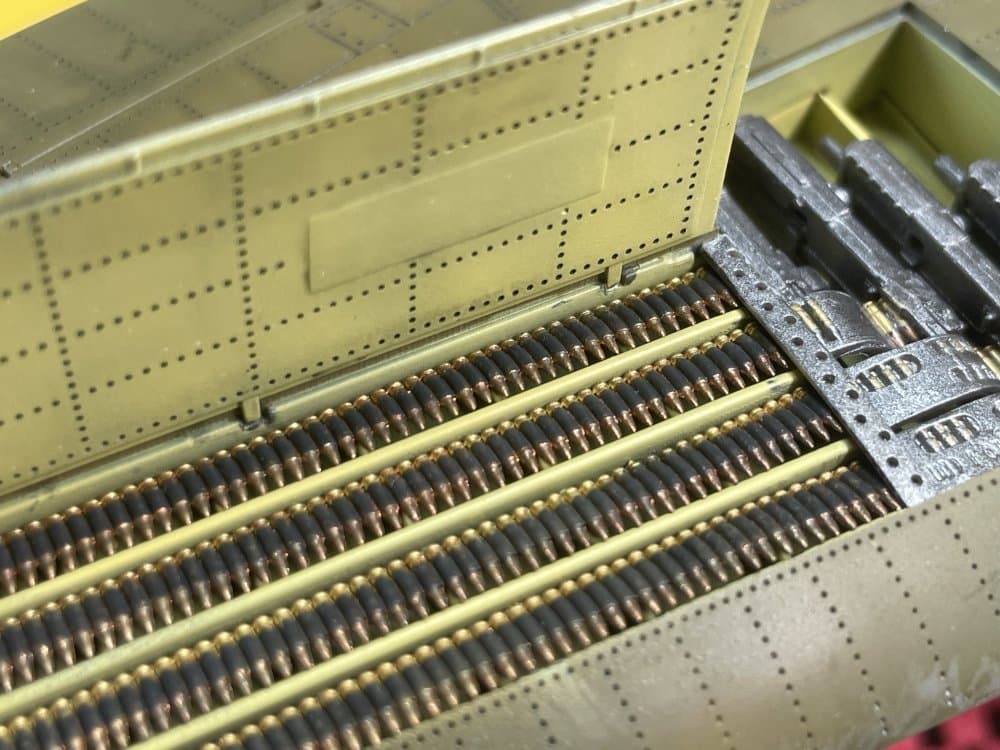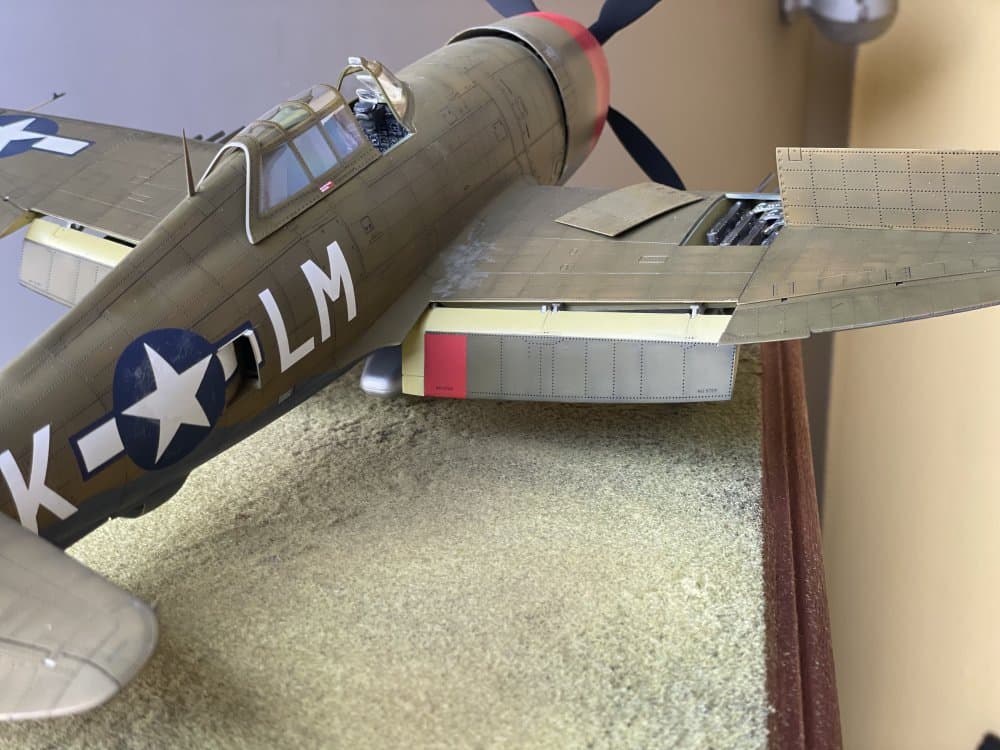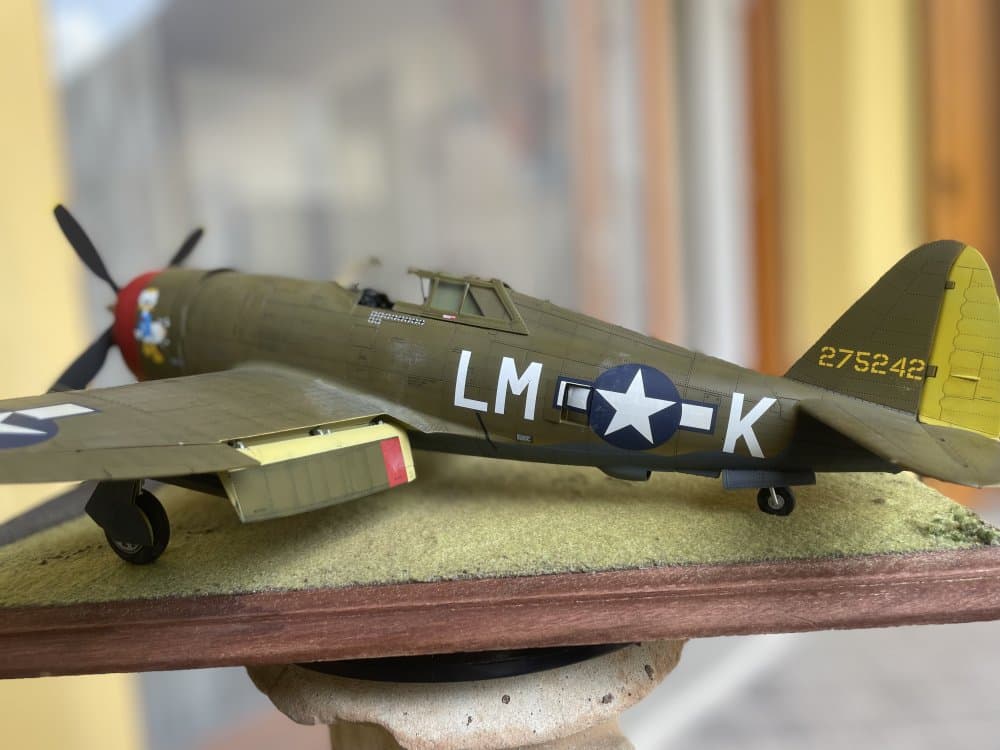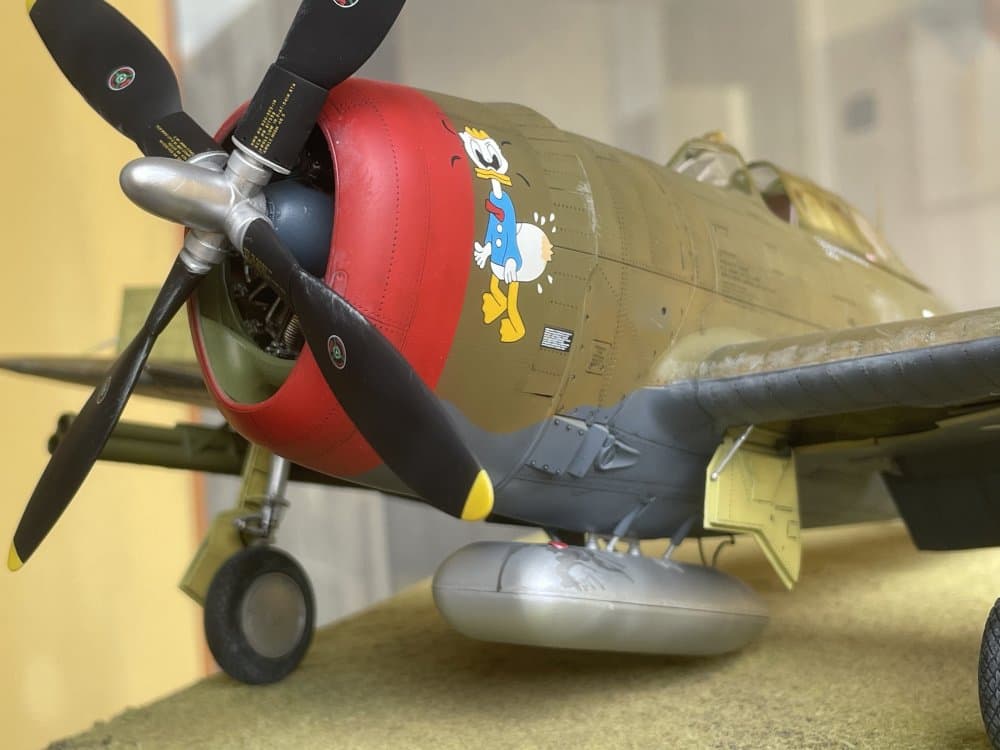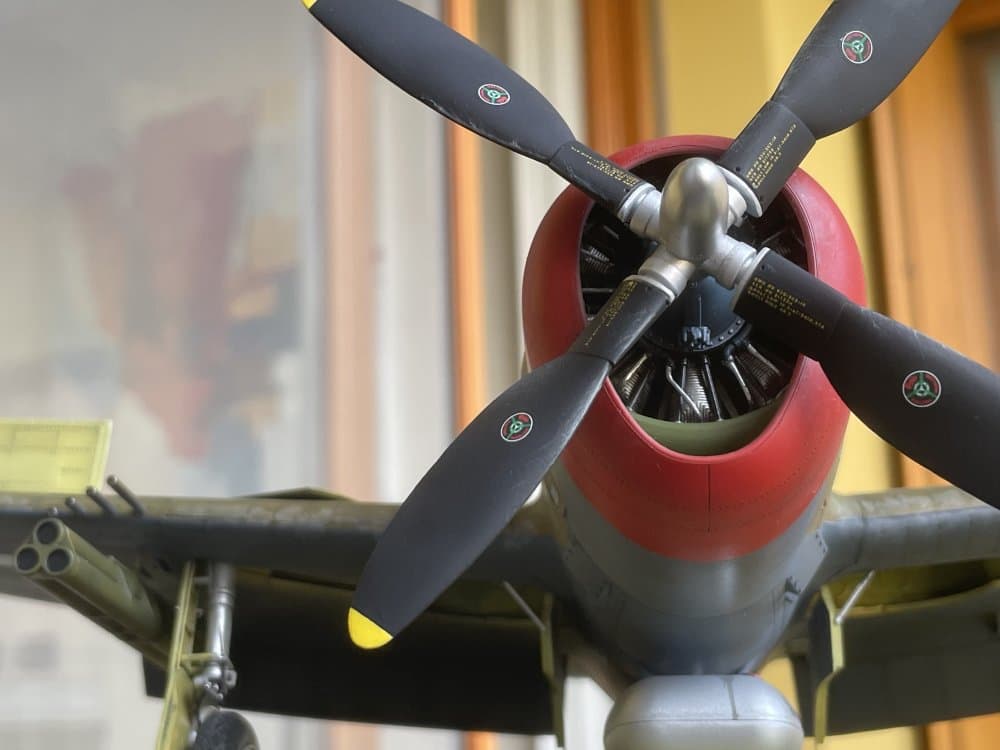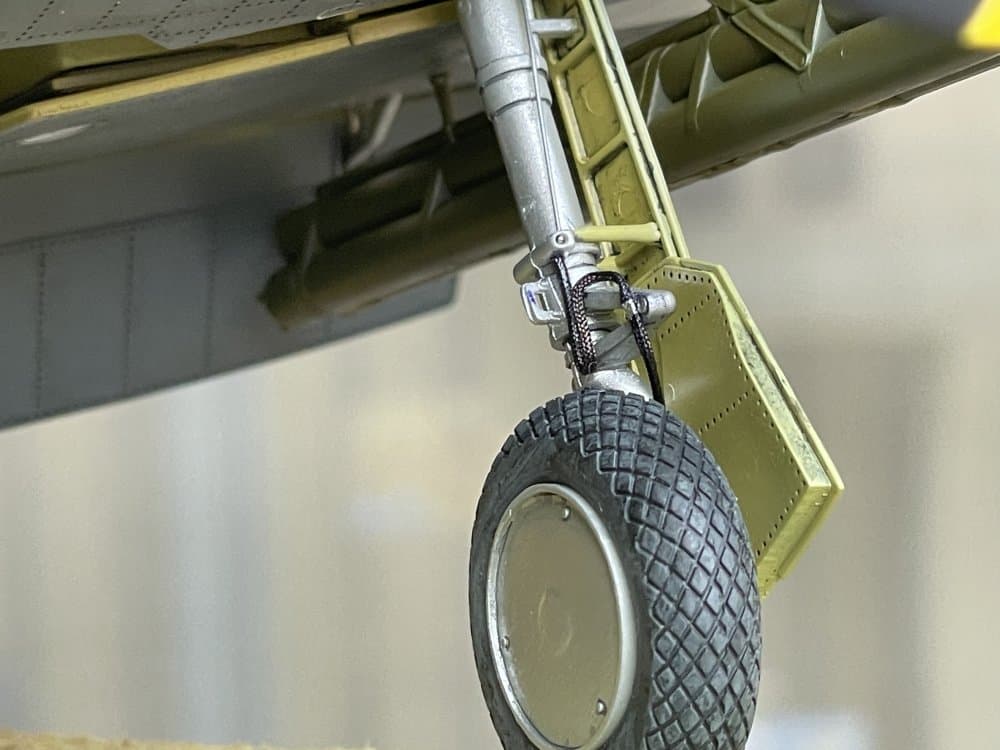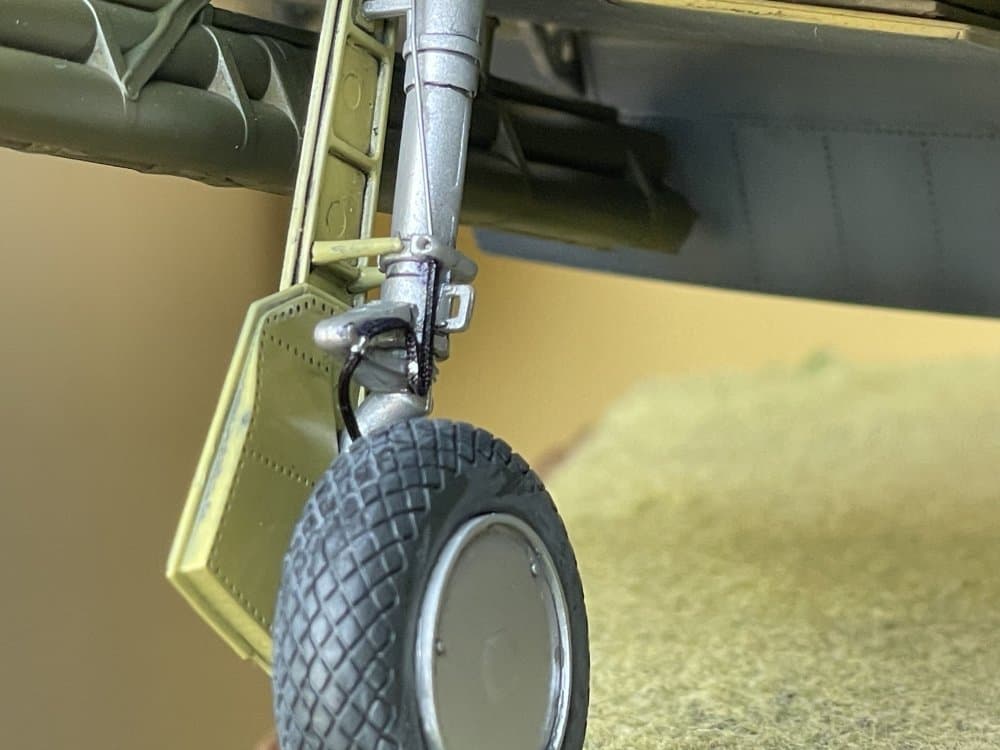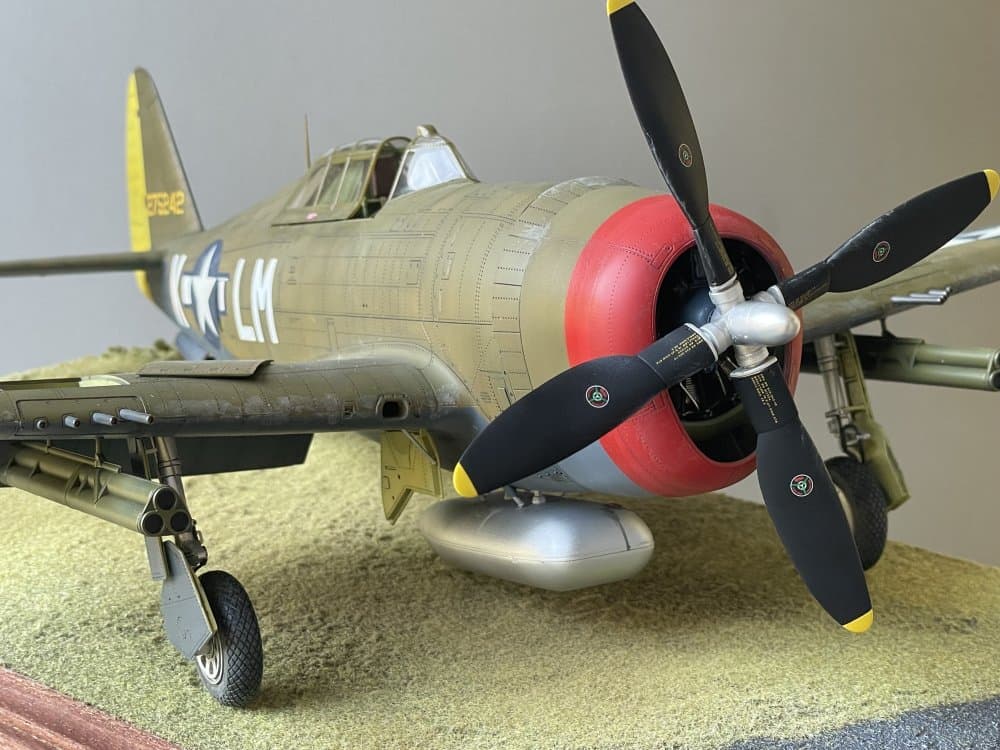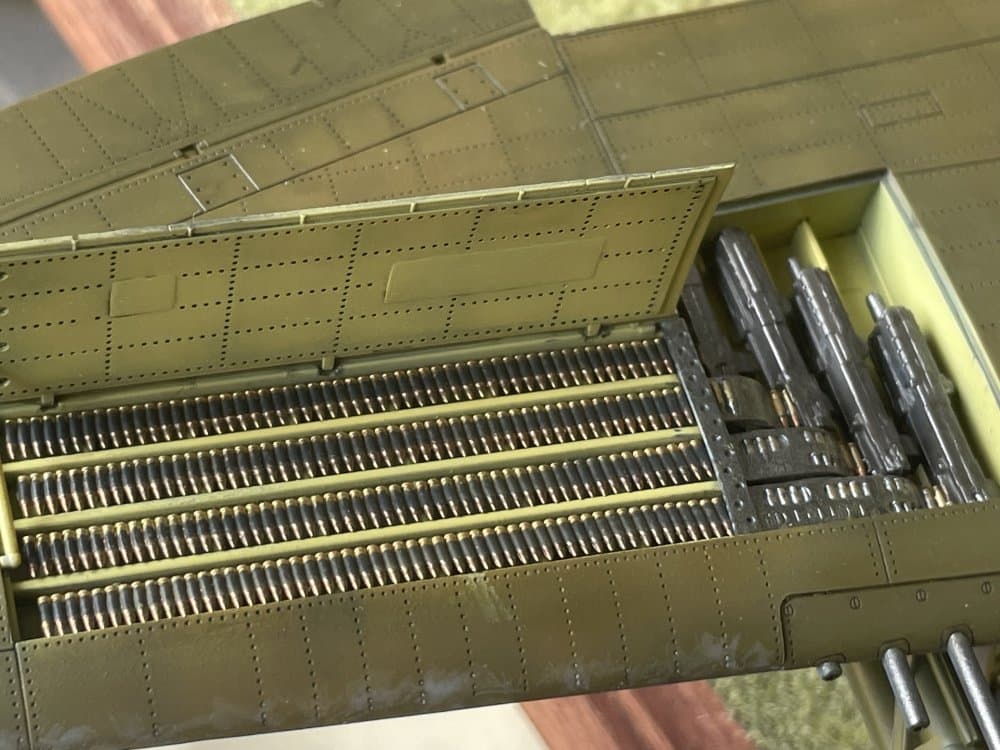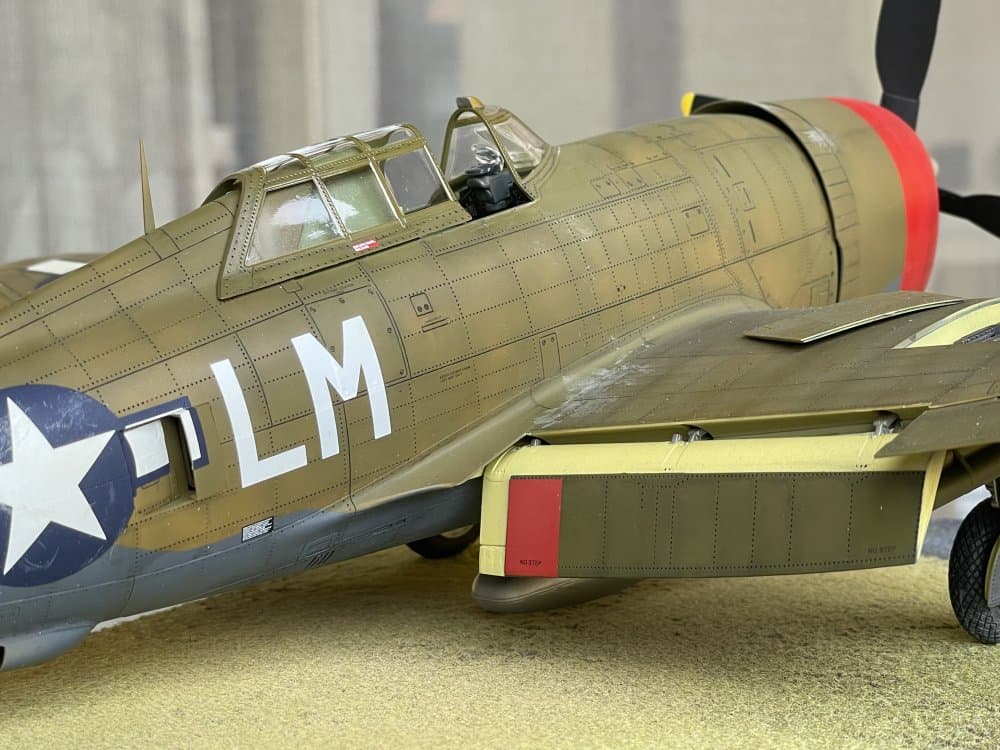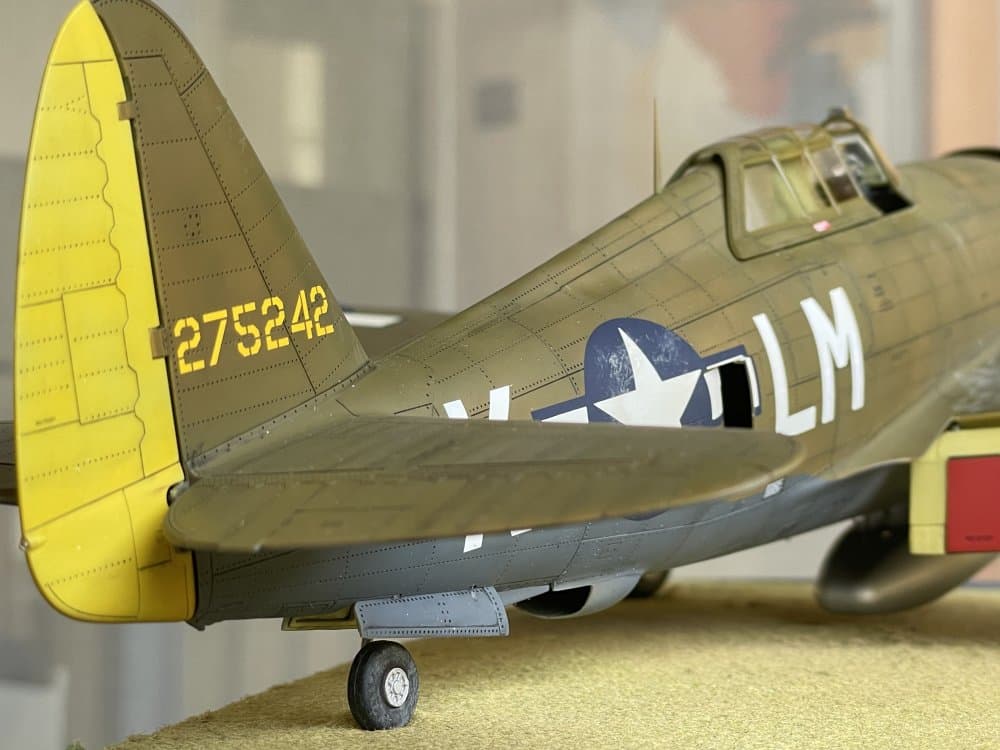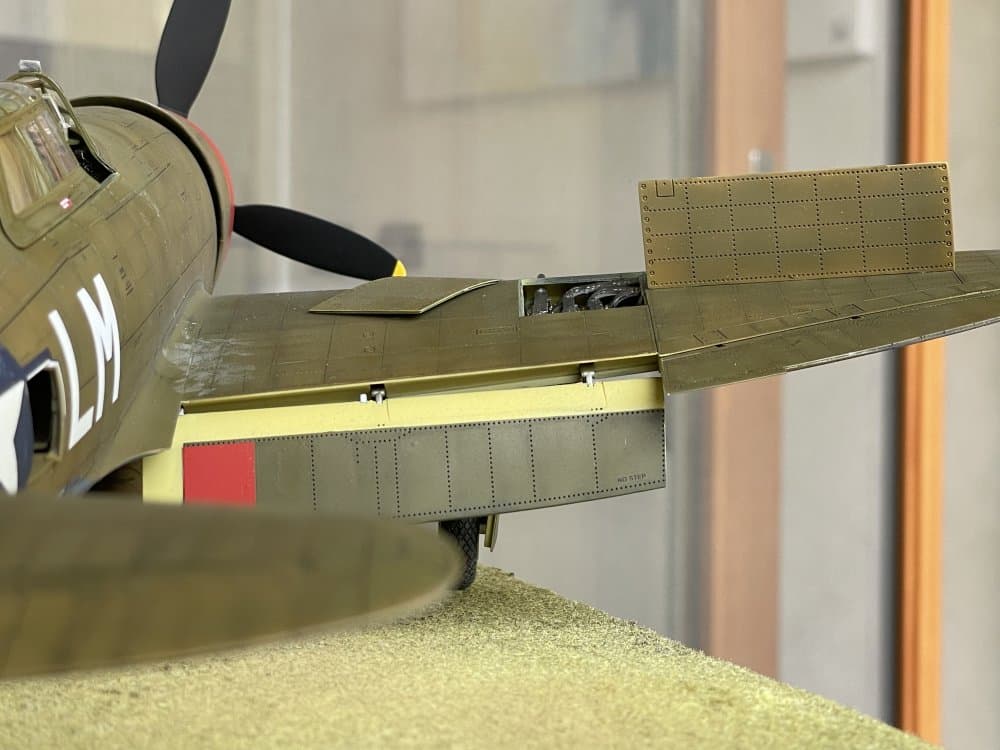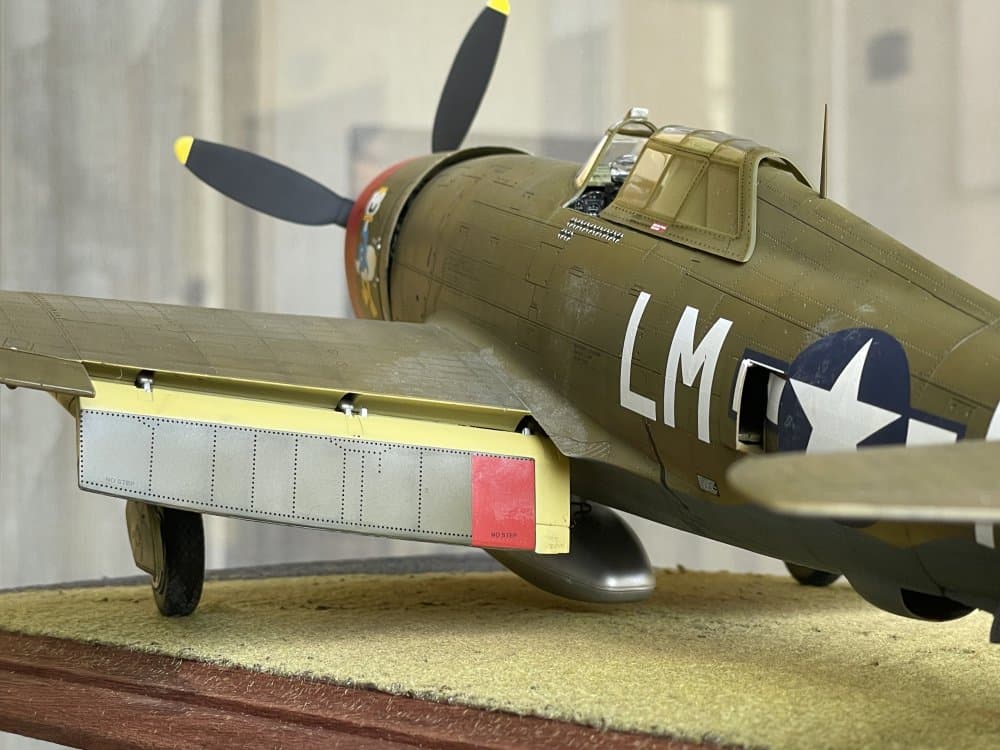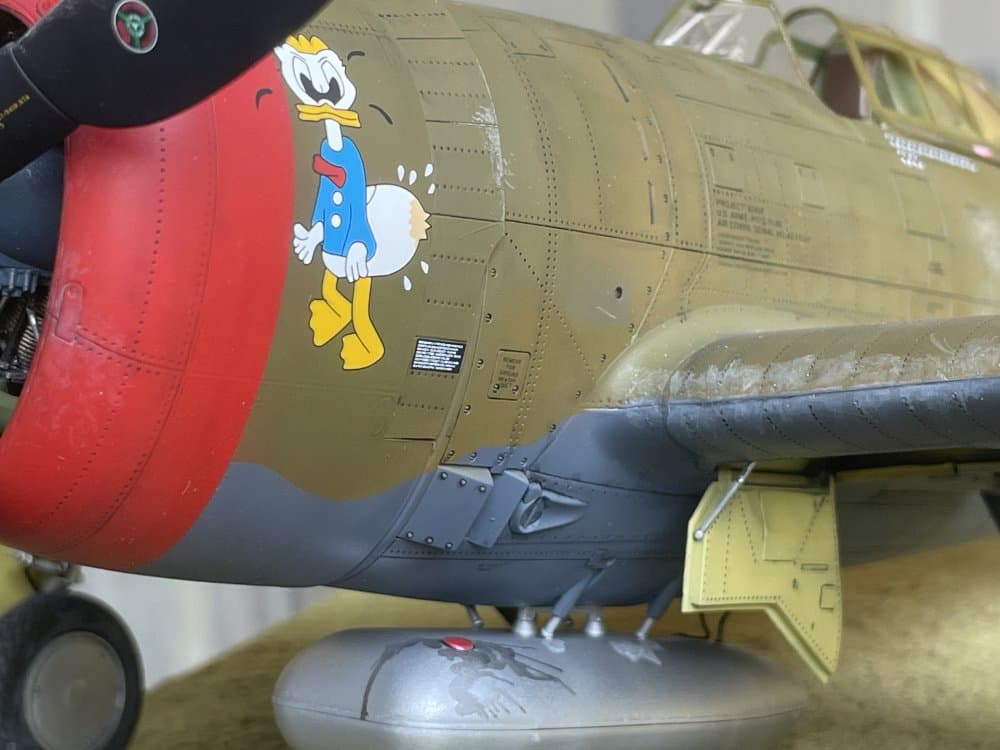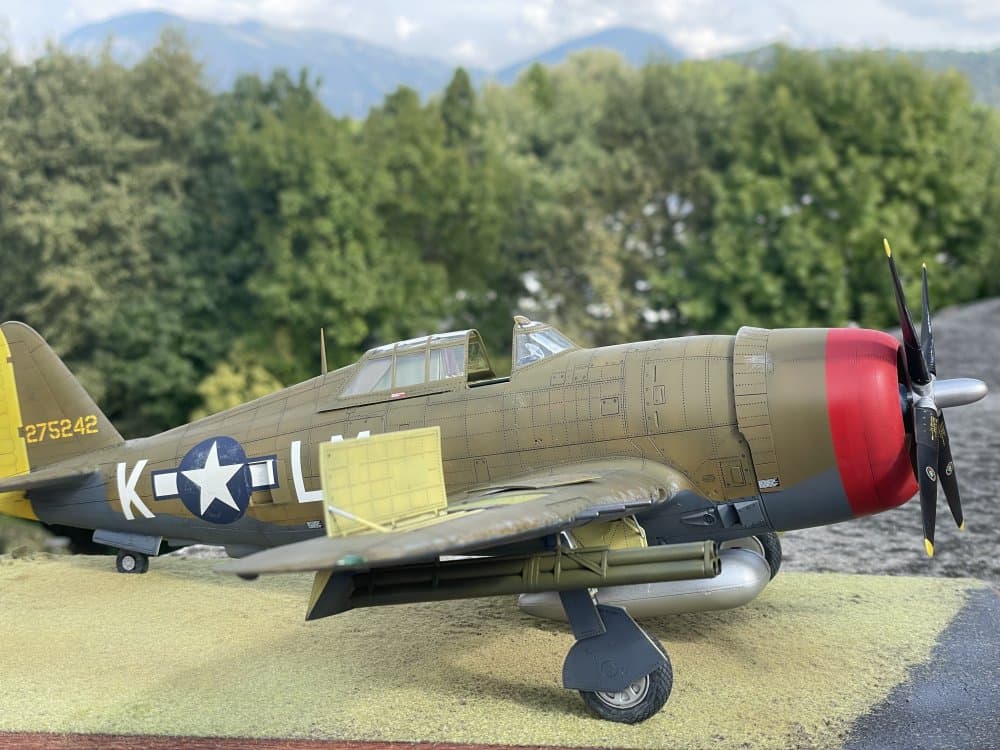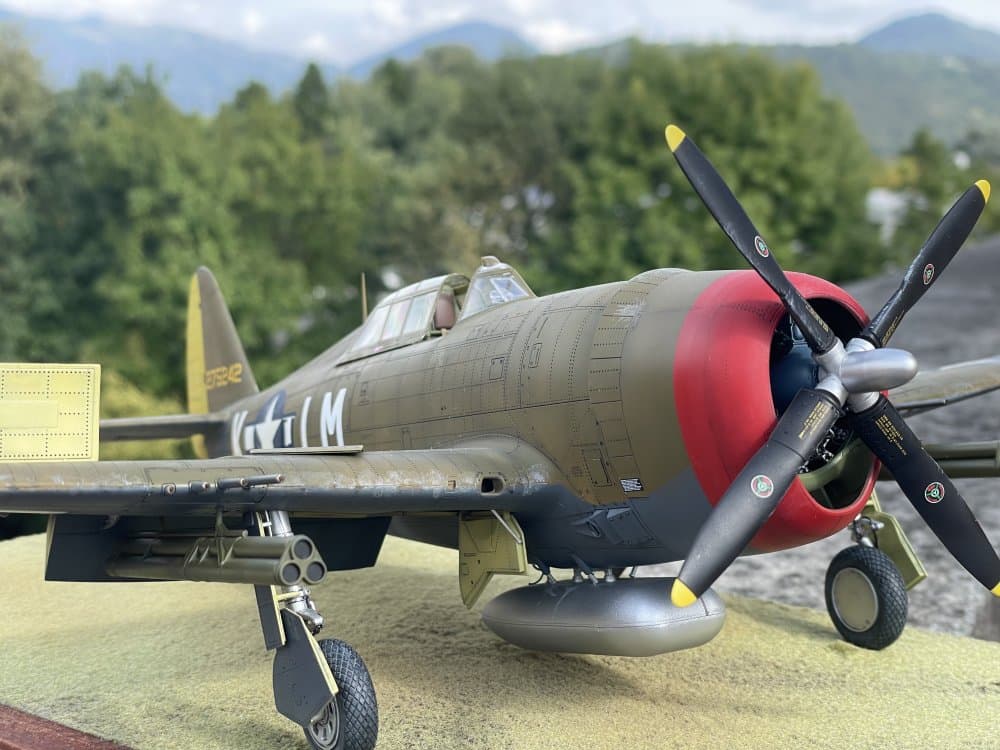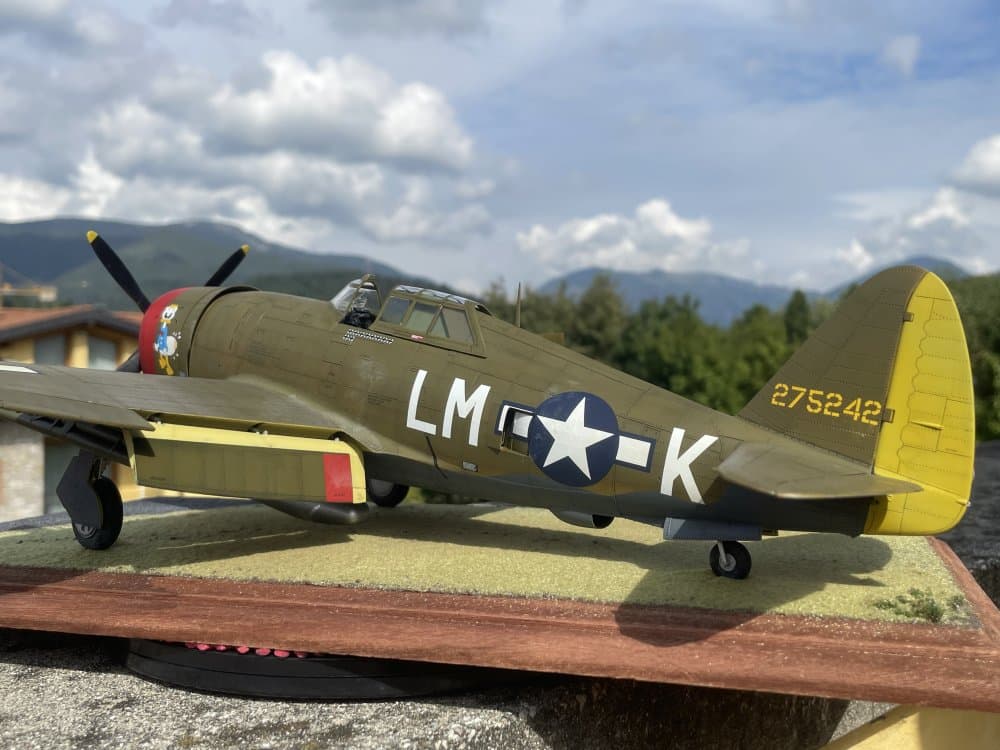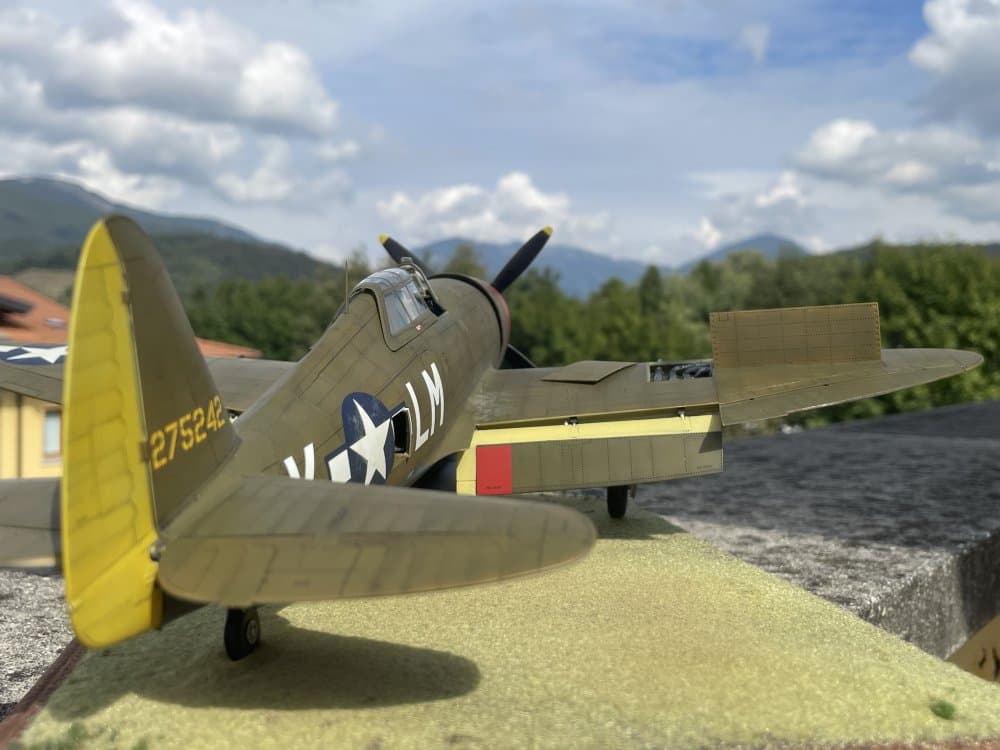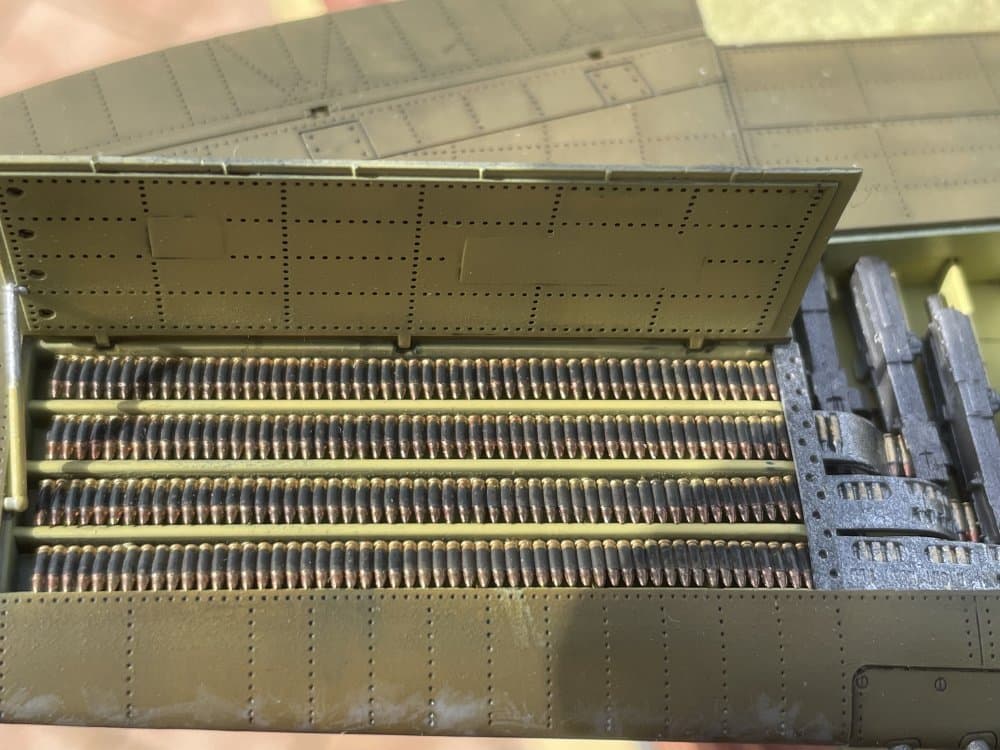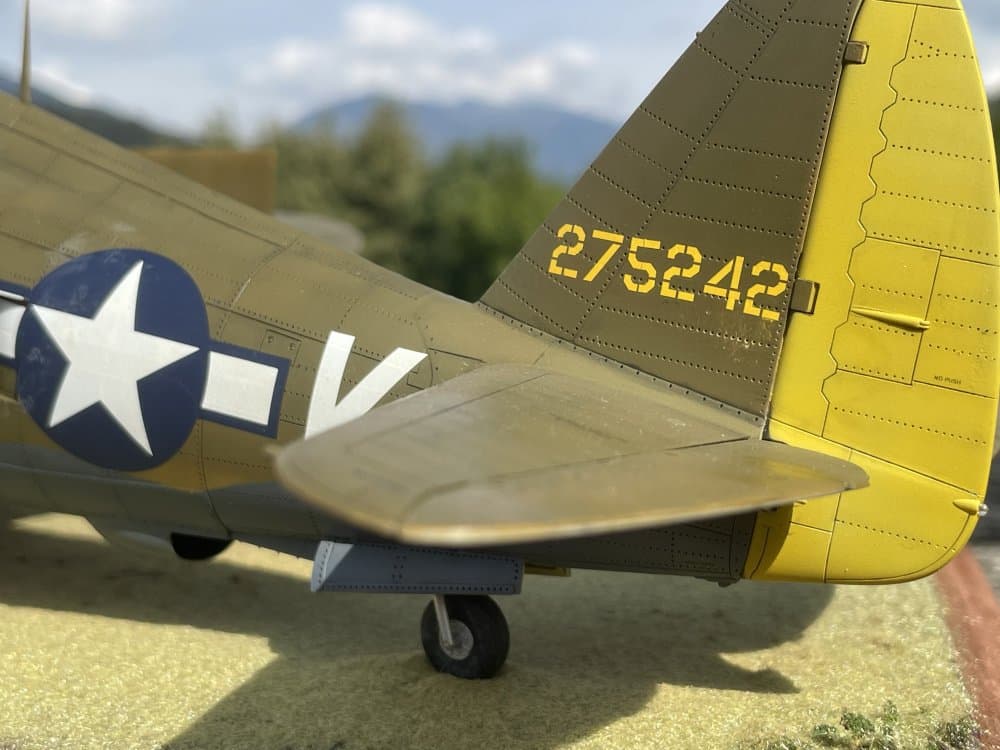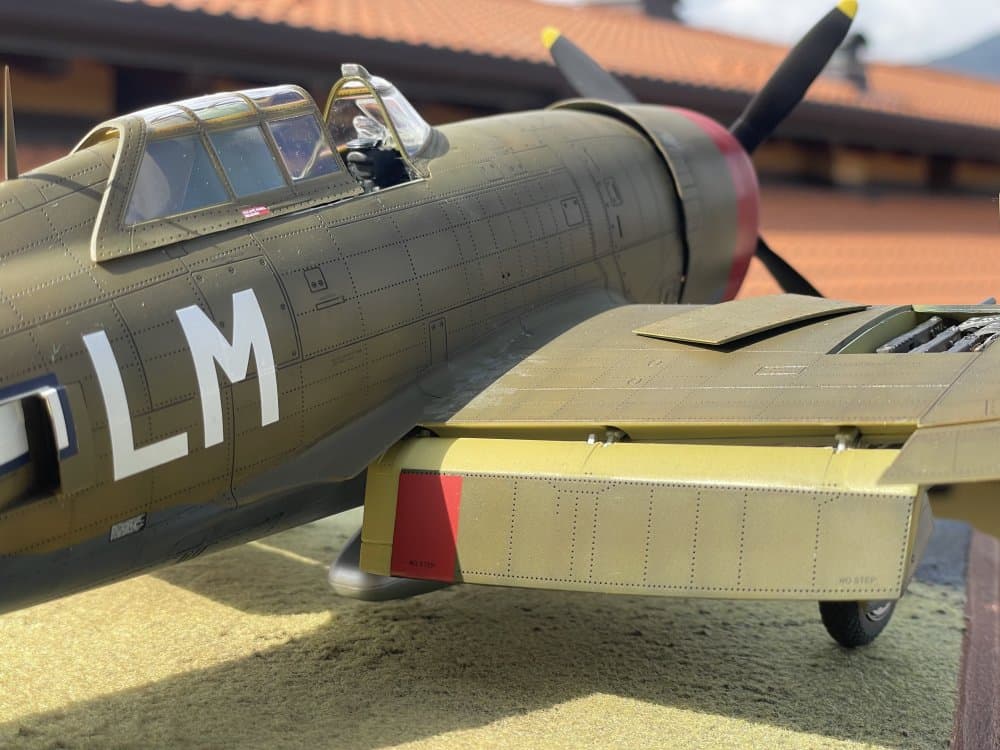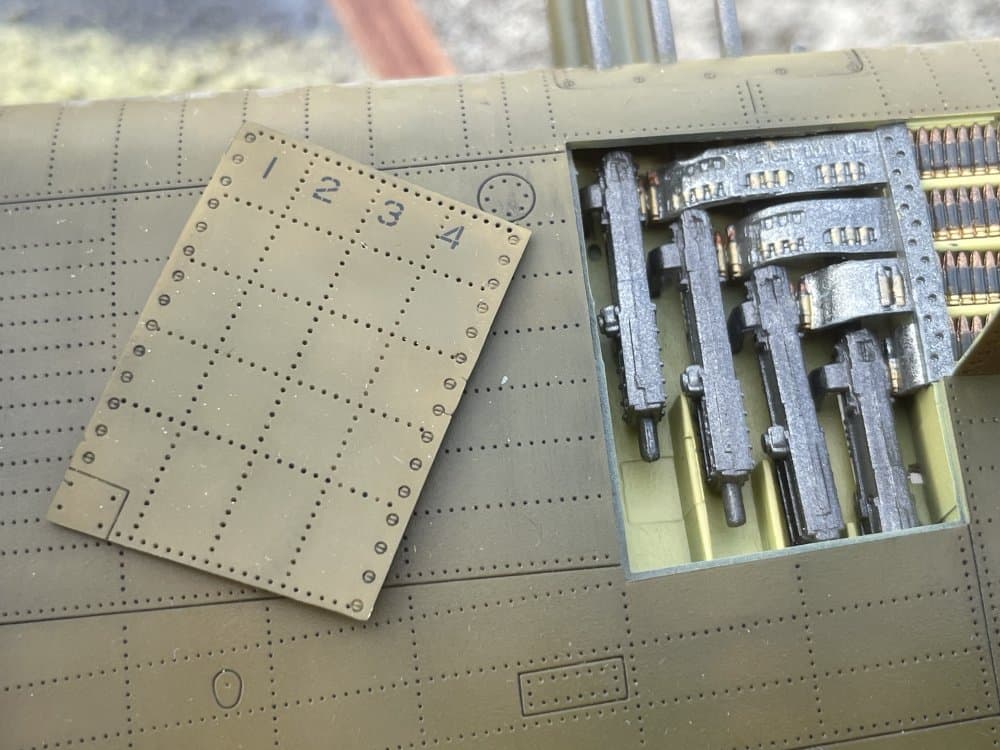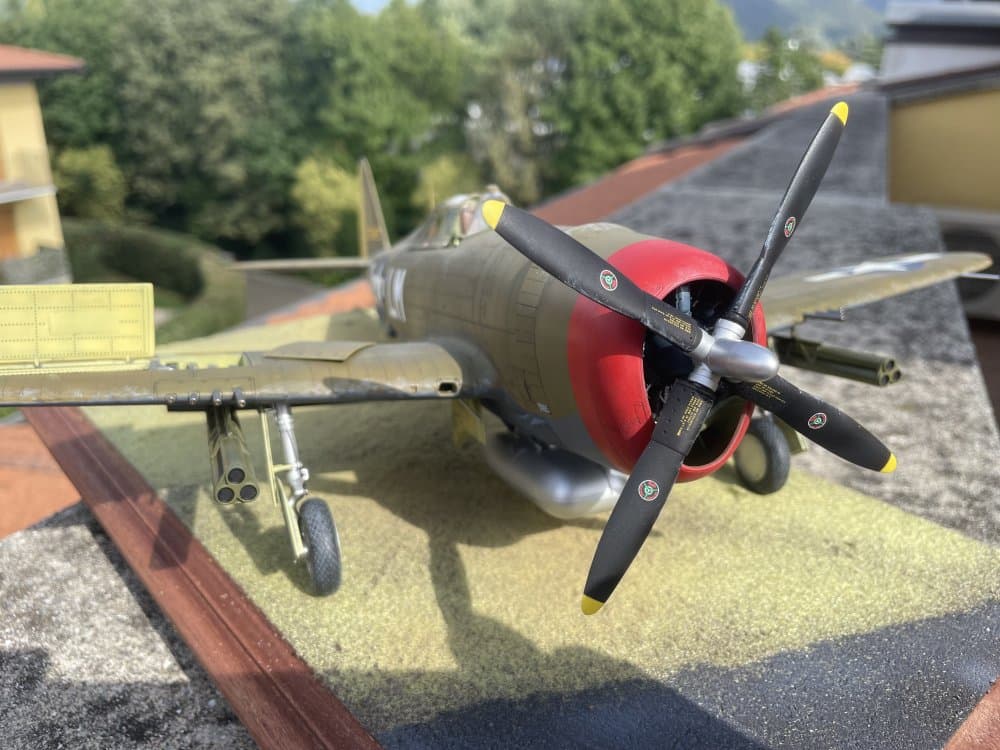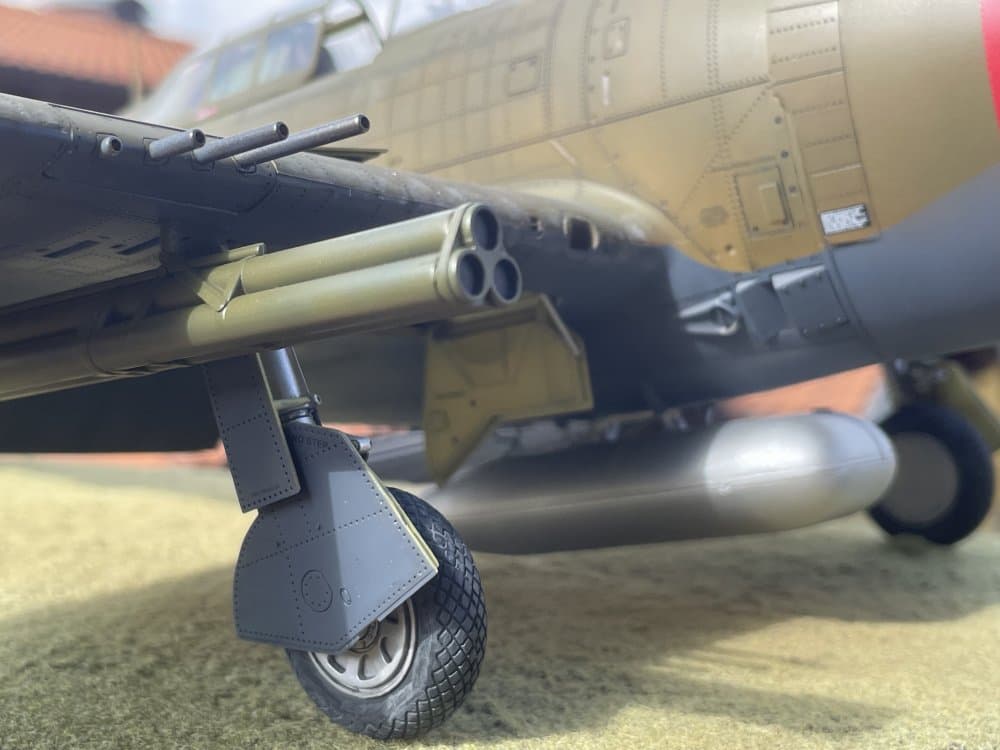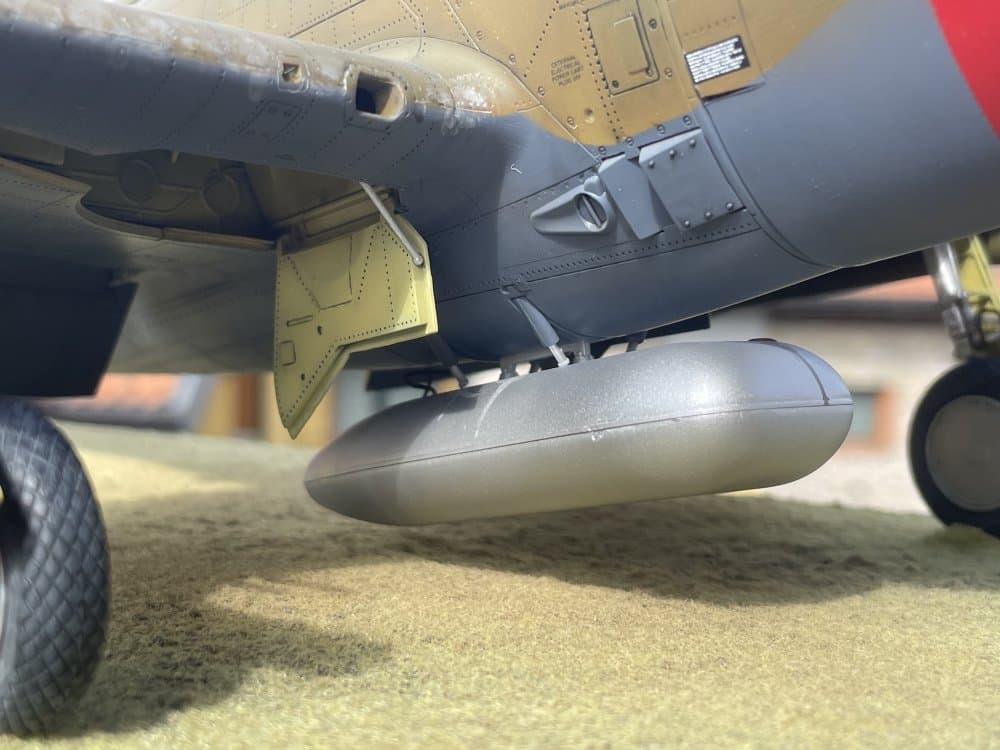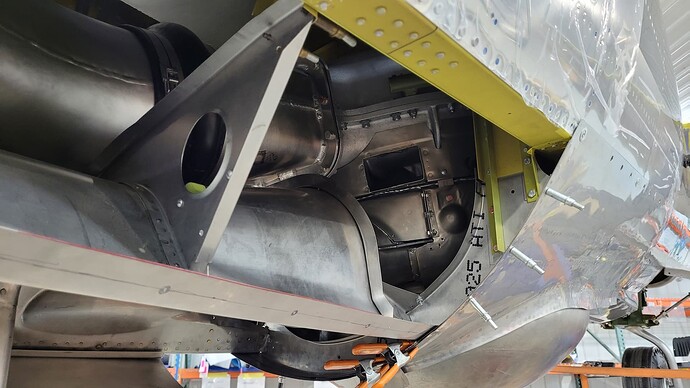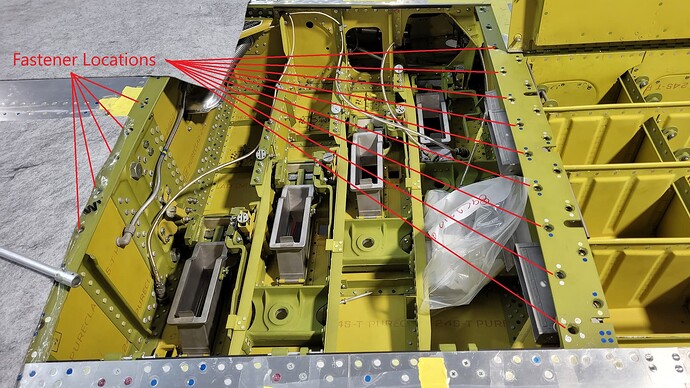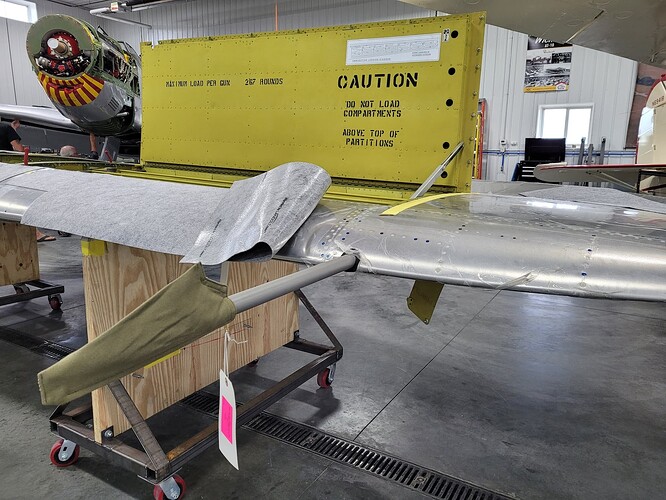Hi guys from Italy, glad to be here for the first time. My previous Su-35S really worn me out, so I decided to return to an old love of mine, being this love born over 45 years ago when I clumsily built an old Matchbox kit in 1/72. I thought I would do a simpler and faster job. And so it was, but with a lot to say
The P-47 Thunderbolt is definitely an overrepresented aircraft in every scale. Maybe for the fascination it arouses when you look at it, maybe for the relevance it had during the conflict of the Second World War, maybe for the technical innovations it brought. Or maybe for all these things together and for others.
I am pleased to give my very modest contribution by presenting you my scale reproduction of the legendary Thunderbolt, Razorback version…
My model, In real life, was an aircraft of the RE-11 production block from Republic’s Farmingdale plant.
The kit is a Trumpeter in 1/32 scale. On this box I will make some final considerations, after the presentation of the model.
First the photos, starting with a rare historical color photo of the subject. I’m also posting some pics of mi WIP here. Just one thing I would like to clarify: this photo is the only historical color one I have been able to find on the web of this specific aircraft. Are there other color photos that I have not found that show the aircraft at a different time during the war? Many modelers reproduce the same subject with the yellow hood band in compliance with the kit instructions. Are there other sources where the aircraft appears with the yellow band or are many of the models in circulation wrong? I do not have the truth in my pocket, so the discussion is open on this and any documented observations are welcome.
Here are the photos:
As mentioned above, this kit (Trumpeter 02262 in 1/32 scale) has some undoubted qualities but also some serious flaws. I mention, among the positive aspects, a remarkable surface detail, the well detailed wheel bays, the tires in one piece of soft plastic and, of course, a frankly wonderful power unit, both for what concerns the engine in the strict sense, and the whole supercharger part. Also the general fit is quite good.
The negative aspects concern various approximations in the instruction booklet as well as in the decal sheet. I will say right away that for this last aspect I resorted to an aftermarket sheet from Techmod (32004) that deals with the same subject.
I mention here, for example, that the instructions do not distinguish which pieces to mount and which not in reference to the different versions of the aircraft. The circular antenna on the dorsal spine is given generically as an alternative but it is not said that this aircraft did not have it at all. Again, the underwing pylons are given as ready to assemble but in real life they were implemented starting from the D-15-RE and D-15-RE versions. The decals are insufficient, the national insignia are very fragile, incorrect correspondences between the decal number on the instruction booklet and the decal on its sheet. Inaccurate stencils. The right side/lower/upper views of the subject I represented are completely missing from the painting instructions. The color of the colored band on the engine cowling is given as yellow even if in the historical photo I published it is clearly red (to be honest the same error occur on the Techmod sheet). There are other things to say but I will skip them so as not to go on too long. I only ask: is it so difficult for the manufacturers to provide detailed and historically truthful instructions?
In short. a good research work really helps a lot to avoid historical inaccuracies in the correct representation of the model.
I preferred to represent the aircraft in its ground attack role but, guys, the only doubt that I have left, on this topic, concerns the rocket launchers. I have not been able to find certain information about the presence of this ordnance on aircrafts of this block. I seem to have understood that in any case, once implemented, they could also be mounted on previous versions of the P47. Is that real? Anyone can give me an accurate information?
That’s really all.
Dan
